

























































































































































Before
spring there are days like these.



How I met them: at Wawa (agh), on Tinder, on Tinder again, six months later (aghhghh), through mutual friends, in class, in the 4th floor of DRL, the math lounge, of all
How I loved them: well, badly. Through all the amateur poetry. Why was it so hard to write about them? And why did every attempt turn out so badly? All I wanted was to remember everything.
Like being with W last spring. The sweat collecting on his forehead like diamonds. Better than diamonds. I didn't know then that beauty never needs a metaphor. But anything worth writing about is also worth writing badly about. And failing in love does not mean failing at love.
After sex: "What are you thinking about?"
"Nothing."
Nights in X's bed with the white curtains around his windows. Strength and patience rising off him as he sleeps. His chest. His shoulders. The fine dark hair of his stomach. God he's so lovely that just looking at him makes my chest hurt slightly. I never want to forget this.
In six months he'll be in California, joining the ranks of professionals who are certain they will soon own luxury cars and at the same time manage to be good.
Now I know that every person has many people inside them, little people each with their little ambitions, their exhaustion, their favorite way to eat an egg.
Now you stare at the strangers walking in front of you on Locust, and feel the space between their fingers, which is love, a small space.
And the guy from the math lounge wasn't my type, I don't like loud talkers, but he was so committed to his notions of symmetry and continuity, when I heard him talk about stochastic homogenization I wanted to press my mouth to his, my life to his life. Am I poly? Am I bi? Wrong questions. Here's a slightly less wrong question: How to kiss a poisson process?
After sex: "What's your favorite number?"
"I like powers of two. They make sense to me."
"What sense?"
"Like, 16, eight. They open up. Like trees. They're not rare, but they have their own natural beauty."
I met the first boy I ever had sex with at camp in May where I was the best writer in the workshop. If I had been just a little bit better, I would have realized that there were people my age, many people, producing work of a caliber beyond my compre hension. On one of the last days of camp he asked me if I wanted to be his girlfriend. I said no. I thought, people don't just date other people because they're there and you are too.
And last week X said, "Let's just be friends." And smiled. Then there's the moment where he looks at me, and I'm supposed to say something. But I just want to breathe in what he breathes out. How to kiss a person's breath without kissing the person? Does everyone else think this much about sex? Does everybody else think this much about nothing?
Now here's the real question, and if only STEM people would explain this instead of inventing new types of cars. Tell me where are all the people I've loved. And left. And who have left me. And how does love blow through life. And how does life still blow through time. And how does time blow through hair. Because I will always love you. Even when I don't. Even if I cross the street to avoid you. Whoever I'm with. Wherever we are.
Now W and I are stalled at an elevator with nothing to say to each other. And if he'd asks what I'm thinking, I won't say, "Nothing." I'll say, "How incredible that we used to be in love." And remember that time when we were unhappy in that tiny room and it was all horrible? What if it wasn't? What if I'm thankful that it happened? That I did it with you?
Today I'm 21. Soon I'll be 22. Soon May will be here again. Soon my nights with X will be gone. We know where this goes. Okay, days, come in. I’ve been practicing for this my whole life. I ate a peach this morning, I remember the sound it made at the first bite, like clicking teeth while kissing. "I won’t be your something," the peach said. "Okay," I said, and kissed it.



Illustrations: Collin Wang




Then you realize that yeah sex is good, but perhaps intimacy is even better.
Okay yeah sex is good but have you ever had the creamy crab and shrimp risotto from Quaker Kitchen after your first day of classes and followed it with the creamy tiramisu for dessert and your body literally shook—well, in the case of this strategically named dining hall, quaked—with pleasure?
William Penn establishing Pennsylvania as the Quaker province in the 1680s directly caused that line to be written—nay, happened only for that line to be written, I’m convinced. Best domino effect in history.
And yeah sex is cool but have you ever argued your case to your organic chemistry teaching assistant the day after the scores for the final were released, because he was, quite literally, edging you to an A, and then winning the argument (by a sweet, sweet technicality) to receive the singular point needed to take you over the edge?
In hindsight, perhaps I wouldn’t have needed such a saving grace if I had spent more time studying organic chemistry instead of the anatomy of my boyfriend. But unfortunately I was too distracted having my guts rearranged to care more about rearranging carbocations. A sweet victory was achieved in the end, though. One arguably sweeter than the other.
Because yeah sure sex is great but have you ever had a scaldingly hot shower after days of cold showers (because the dormitory you pay a disturbingly large amount of money for, in the Ivy League institution that gets a disturbingly large endowment every year, had decided to stop running hot water for a few days in the middle of the winter cold) and felt all of your worries and cares melt away with your skin?
Yeah sex is nice but have you ever had your dad jokingly hold up three fingers, your mom question why he’s holding up the symbol for the Mockingjay from The Hunger Games, only for your dad to tell your mom to read between the lines? And she innocently asks if it means “I love you” but what he really meant was to literally look between the lines to see that he’s holding up his middle finger to jokingly flip someone off. But you can tell he really loves her because he chuckles adoringly and nods. And he tells her what it actually means but that he prefers her interpretation. And she laughs, and he laughs, and you laugh with them both.
And you think to yourself how easy love must be. How wonderfully easy, to just laugh.



And yeah sex is good but have you ever binge watched all of the Spider–man movies, from Tobey Maguire to Andrew Garfield to Tom Holland, in the span of winter break because he’s your boyfriend’s childhood hero and it’s the closest thing you’ll get to watching your boyfriend growing up? And your eyes are getting tired, but his eyes are lighting up, and all of it’s worth it just to see that little–kid smile on his face.
Then you realize just precisely what you’d given him: the power to break your heart, and the responsibility to take care of it. Because you’ve fallen hard (though hopefully not as hard as Gwen Stacy), but he’s there to catch your fall.
And of course sex is good but have you ever opened your door to your best friend holding up a cup of thai tea, with less ice and 75% sugar, because she remembered that’s how you like it, without ever asking for it? And you thank William Penn, or Ben Franklin, or whoever built that TeaDo on Chestnut Street, for what’s actually the best domino effect in history.
But if we’re talking about domino effects, I should raise the contender of tracing my history on the palms of my grandmother. How her existence has led to mine, how her embrace means more than just a hug from a person, because it’s past and present colliding, it’s future being made.

Then you realize that yeah sex is good, but perhaps intimacy is even better.
To know yourself—love yourself—so well that you take care of your body with a creamy crab and shrimp risotto, that you rejoice in your own accomplishments, no matter how small—because size doesn’t matter here.
To find love in the smallest moments, in silly jokes and Marvel movies, in knowing your best friend’s boba order by heart, in cooking food with your grandmother, in living so fully, so brightly, so vividly your heart might burst.
So yeah sex is good but have you ever written about things that are better than sex and poured so much of yourself into it, put too many self–incriminating anecdotes to be truly anonymous, and felt more bare and more naked than you do during the physical act?
Ah, well, never mind. Nothing beats an orgasm.


She’s holding the trash can open and I’m thinking: this is it. This is it.


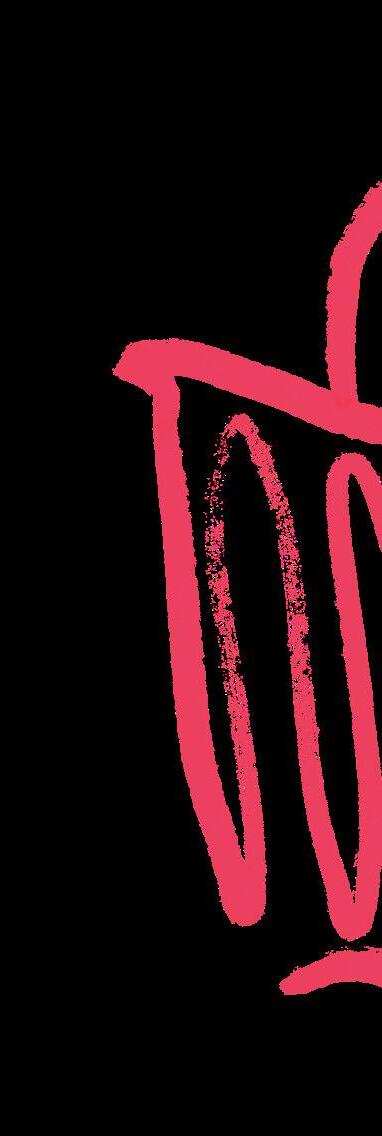


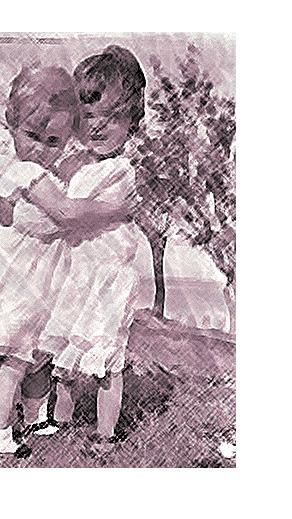


Something changed. I heard her name on the TV in November and I sat on the toilet and cried so hard I couldn’t breathe. I saw her in town walking with her mom and I had to turn around and go straight home. You were heartbreak the way a flower
I didn’t care if she would hate or fear me. It didn’t matter. I used to think I would’ve kept it (my sexuality, her homophobia) a secret forever if it had meant a different
I don’t entertain daydreams about changing her mind any longer, but here’s an old one. Some future version of me says to her: "Will you be my maid of honor?" By the way, I'm marrying a woman. That’s irrelevant. Everyone at this dream wedding is irrelevant. They’re all blurry faces except for me and her. Some future version of her
Sometimes I entertained a different kind of notion. There’s a possibility that she knew about me. Maybe she wanted the same thing—maybe she didn’t care, either.
I wonder sometimes, even now, when I’m sick to my stomach, if I’ve been in love without knowing it. But let’s look at the facts one last time, with the cold certainty of a heart sliced cleanly in half. We were best friends, past tense. The pen’s been set down, and even if I ever did love her in that way, it’s been lost to the years between us. If I did have a chance to pick the pen up again—if I bumped into her in my too–small town, me in my older and newer self, Mary in her white robe and blue veil—I wouldn’t.
The Mary in my head, the one that held the flap of the trash can open, the one that sat on the sand in the morning sun with me, the one that will speak at my wedding in some grand, alternate universe—I get to keep her, but that’s because I don’t get to keep all of her. If we had maintained the façade that our friendship inevitably would’ve decayed into, it wouldn’t have been honest. You can’t be friends with pieces of a person. She couldn’t have loved the part of me divorced from my sexuality, and I couldn’t have
It was never a matter of forgiveness because I don’t feel that she wronged me. But for whatever my—let’s call it what it is—higher moral standing, is worth, I would’ve forgiven her in a heartbeat. Mary, to you I say: I hope you remember me as I was. If I see you again I will tell you about myself. I owe that to both of us. I had fun writing together, and the story was worth it, every comma and apostrophe and period. This is


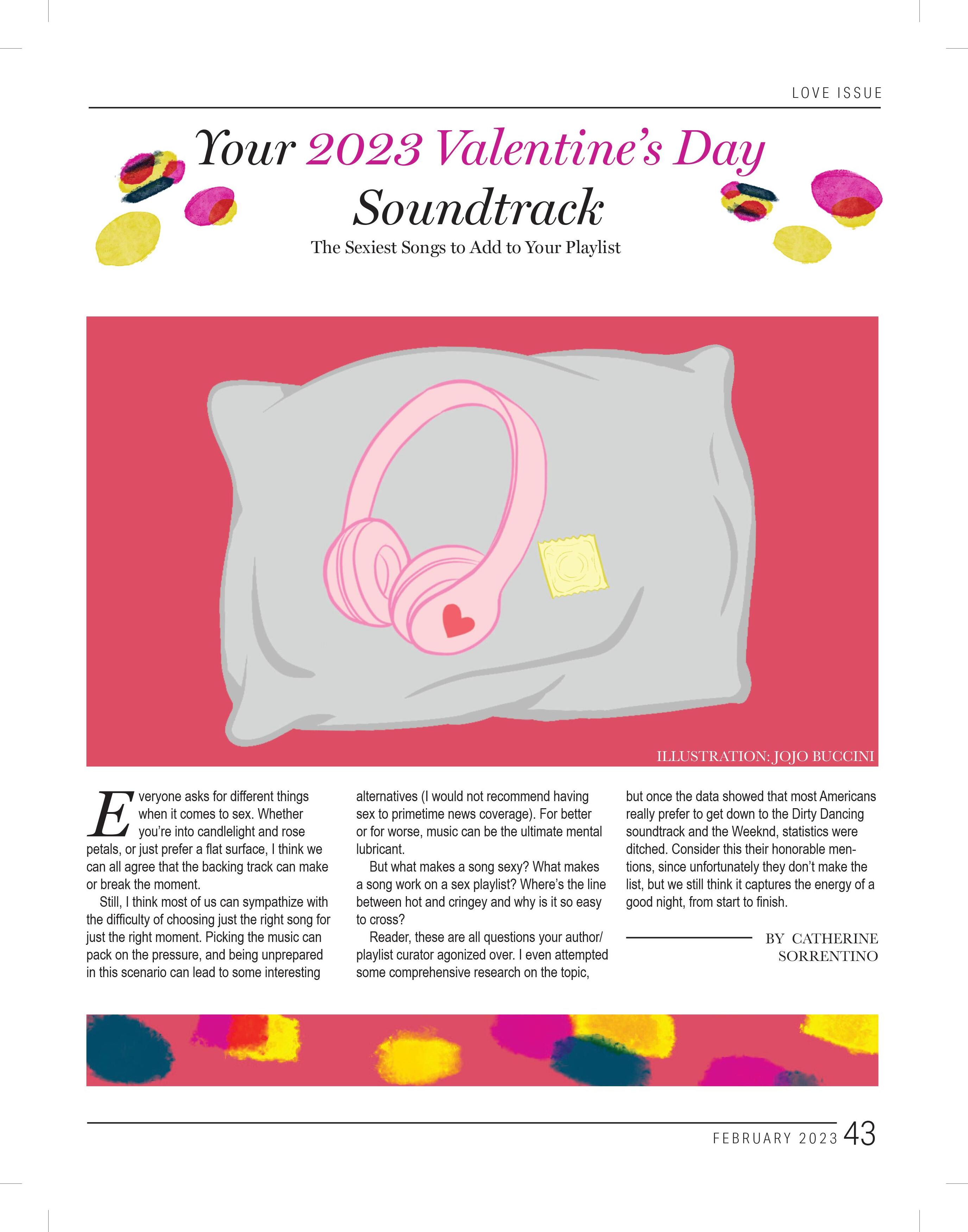



stigmatized for its focus on romance and erotica. Yet these criticized tenets can also provide unique representation for female and queer sexuality. Fanfiction is mostly written by women and often centers queer characters, so women’s sexuality and queer identities are articulated louder in fanfiction spaces than in mainstream media.
Why can’t we do that with Star Trek?

Fanfction has often been stigmatized for its focus on erotica and romance. It's time to rewrite that narrative.
BY VIKKI XU

f you’ve ever found yourself involved in a fan community, you’ve probably stumbled upon fanfiction. Maybe you were unhappy with the last season of Game of , so you searched for an alternate ending. Perhaps you’ve scoured the internet for a blossoming romance between Harry Potter and Draco Malfoy and devoutly followed their (non–canon) journey from enemies to lovers. While many may grow out of their Harry Potter or Game of Thrones obsessions, fanfiction remains a fundamental part of fan communities, or “fandoms,” of all kinds. As any new media becomes popular, it is almost certain that fans will produce fanfiction—works of amateur fiction that borrow the characters, settings, and concepts of existing media—to go along with it.
In the last 15 years, fanfiction has gone from fringe and eccentric to almost mainstream. Still, the genre has often been
Francesca Coppa, a former Wolf professor of television studies at Penn and current chair of the English Department at Muhlenberg College, recognizes this role: “I teach film studies, and we talk about the male gaze … and the way in which mainstream culture, even when it’s not trying to, has a very, kind of, objectifying and male–centric notion of gender and sexuality. And [fanfiction], because it comes from a kind of female–dominated community, doesn’t. It’s different. And it freaks people out.” While fanfiction provides a place for these communities to share their work, that may also be a reason why it is an unsettling topic for many people. In this genre, themes of consent, kink, sex, and relationships are explored in a space away from the male gaze of mainstream media.
In addition to its suggestive reputation, at that time, fanfiction lacked credibility as a form of literature. Fanfiction writers could easily come under attack for stealing material, both in an artistic sense and in a legal framework. Yet, Coppa recognizes that fanfiction is original, transformative work: “The phrase ‘transformative works,’ it makes my heart happy every time I see it [...] It’s like, of course you didn’t steal. You just wrote 100,000 words, right? You did all the work and you wrote a whole novel.”
Either way, the collaborative and amateur nature of fanfiction is a refreshing break from the modern ideas of publishing companies and copyright infringements. As an English professor, Coppa teaches fanfiction alongside other retellings of stories, like "Beowulf" or Sherlock Holmes . In this way, fanfiction resembles older forms of storytelling and creativity, where stories are retold and remixed over time. People have reproduced Hamlet and retold Romeo and Juliet countless times—even Shakespeare himself didn’t write those plots from scratch.
The rise of the internet can be connected to the larger growth of the fanfiction community. As the world wide web became commercialized in the early 2000s, the fanfic community needed a platform—specifically one where readers and writers could be protected from copyright–related legal action and censorship. In 2007, Coppa joined a group of volunteers to start a nonprofit called the Organization for Transformative Works, which works on projects for a community–focused space of amateur writers, far from the dangers of commercialization.
OTW’s main project is Archive of Our Own, a public online archive for fanfiction and other fanworks. The website is very purposefully described as an archive—it’s not social media or an online community, but instead a space for storytelling. As a way of encouraging creativity amidst the stigmatization of fanfiction, OTW allows for anonymous contribution. Unlike social media or online communities, there are no incessant email reminders to finish a story or recommendations for new posts. There’s no product marketing or advertisement. Additionally, the stories don’t have a short lifetime like posts on social media do. “We're seeing a lot of this as people come over from Instagram or Twitter where they think, like, will people think I'm creepy to comment on a Star Trek story that was written in 1992?", Coppa says, "And the answer is no, no more creepy than it would be if you went to a library and took out a novel written in 1860.” Since its creation in 2008, AO3 has become the 56th most–visited website in the United States—and the most–visited arts and entertainment site, above Disney Plus, Hulu, and HBO Max. Amidst the commercialization of mainstream media, AO3 is a unique reminder of the importance of community storytelling, accessible libraries, and sharing ideas. Fanfiction is a unique opportunity for readers to claim agency over the stories they hear and share their ideas with a larger community. So take this as permission to finally finish that BTS fanfiction you were reading, without any shame or stigma. ❋






Kristen Ghodsee, chair of the Department of Russian and East European Studies, is revolutionizing our understanding of sex and love. BY NORAH RAMI

hat do ECON 0100 and your sex life have in common? It’s not just the status of ‘complicated.’
“So many people think that capitalism stops at the bedroom door; you close the door and capitalism stays out. Nobody wants to realize that capitalism is actually in bed with us all the time,” says Kristen Ghodsee, a professor of Russian and East European studies at the University of Pennsylvania.
Ghodsee frst began to consider the relationship between economics and love in graduate school at the University of California at Berkeley after reading the works of leftist thinker Alexandria Kollontai. “It had never occurred to me that the way that I felt about my friends, later my husband, my child, or my
parents were in any way related to the economic system within which I lived,” she says.
Ghodsee began to research the ways relationships change based on economic and political systems, namely within capitalist and communist states. Ghodsee looked into surveys conducted during the fall of the Berlin Wall, comparing the communist East to the capitalist West in what is colloquially known as “The Great Orgasm War.” She found that women living under the communist regime in East Germany tended to report greater sexual satisfaction.
“I broadened out and thought, ‘Let’s talk about love and friendship as well. It’s not just about sexuality,’” Ghodsee
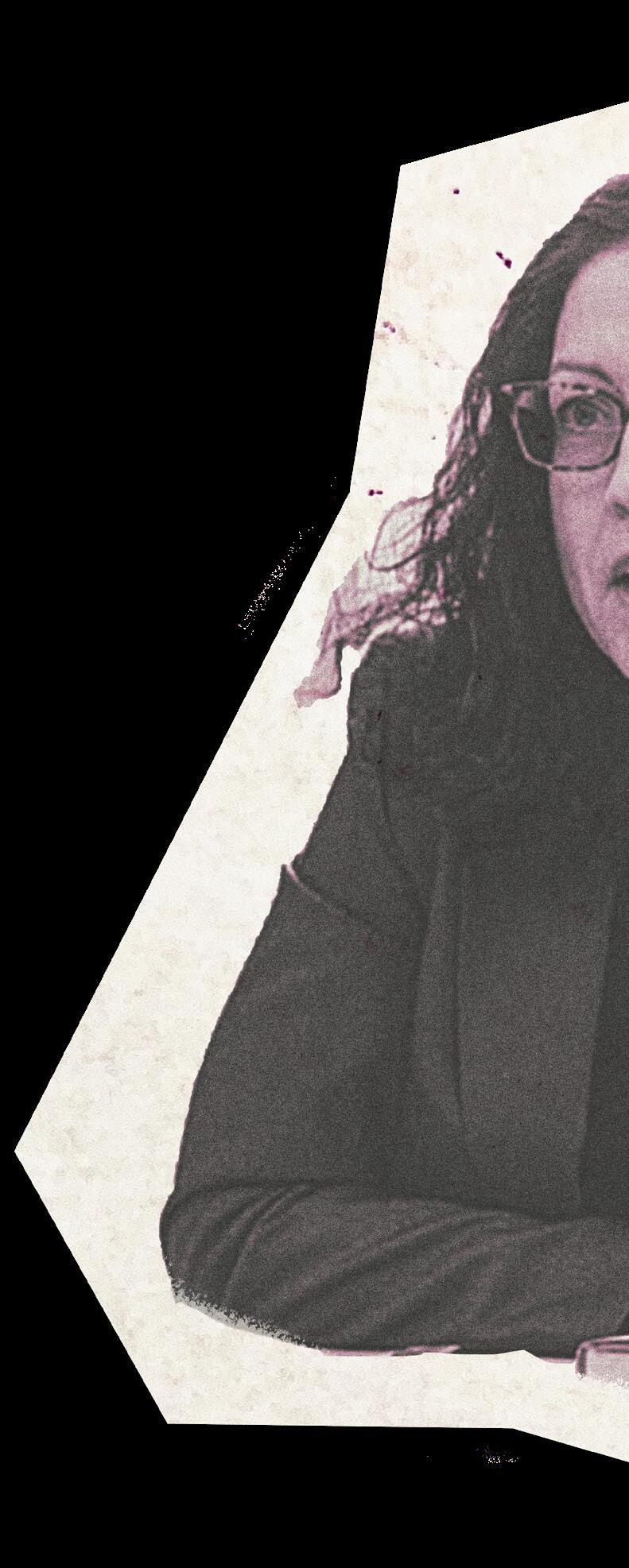
says. As she expanded her research to other countries and relationships, Ghodsee found similar trends. Under capitalist economies, individuals tend to commodify their relationships into a mechanism of exchange; people might choose their partners—both romantic and otherwise—for economic and social opportunities rather than for the enjoyment of their company. “It turns out that social scientifc evidence shows that when we transactionalize different forms of relationships in our life, whether they are flial, friendly, or sexual, they tend to become less satisfying over time,” Ghodsee says. Alongside teaching a class entitled “Sex and Socialism,” Ghodsee’s work received national attention in 2017 after publishing a viral New York Times op–ed, “Why Women Had Better Sex Under Socialism.” After receiving a call from a publishing company, Ghodsee expanded the op–ed into a full–length book, which received national acclaim and has since been translated into 14 languages.
Ghodsee’s next book, “Everyday Utopia,” coming out this year, explores radical expressions of love throughout history, from Pythagoras’ communes to cenobitic monasticism. “From the beginning of recorded human history, there have always been groups of people who resist the dominant notion of love, sexuality, and family life,” Ghodsee says. “I think that there’s so much that we in the 21st century can learn from those communities because it’s happening, discussions about polyamory and alloparenting and cooperative care.” Understanding alternative forms of relationships beyond the traditional Western nuclear family is about more than sex; it offers insight into larger societal issues, such as the modern “loneliness epidemic.” “It’s this idea that we can choose our kin and we can live together in healthy and robust networks of love and care with people who aren’t our blood relations. And that is something that human beings have been doing forever,” Ghodsee says.
Much of Ghodsee’s research on utopias can be applied to college lifestyles in terms of communal living and unconventional relationships, like “chosen family.” In fact, modern dormitory life is directly modeled on the utopian experiments of Epicurius and Plato. “Minus the student loans, hierarchical politics, status signaling, and all the ugly things that happen at Penn that are ultimately fueled by capitalism,” Ghodsee quickly adds. Even modern hook–up culture can be seen through a utopian lens: “Women are emancipated enough to be able to do whatever they want with their bodies, and it’s a community that’s conducive to that, which would have made Plato incredibly proud.” Unburdened by expectations of marriage or children, college students have the freedom to connect with a wide network beyond the pre–defned social boundaries of the nuclear home, reimagining defnitions of love and care.
But still, despite the utopian opportunities available at Penn, transactional relationships pervade other facets of student life— pre–professionalism often places an emphasis on networking, encouraging students to build relationships as a means of accessing further opportunities. While networking and coffee chats are often necessary aspects of career–building, turning personal relationships into professional endeavors can leave students feeling unsupported in the long run. “I really think that the transactionality of relationships at Penn is underpinning a lot of the stress and anxiety that Penn students feel,” notes Ghodsee. But there’s a simpler solution than an economic revolution. “Just share more time with people in a nontransactional way. Hang out in your dorm with whatever your choice of beverage and just do nothing—just talk, just share,” she suggests.
So whether you’re having bad sex or just feeling stressed, maybe it’s time to send that text: “Hey, want to do nothing with me?” ❋
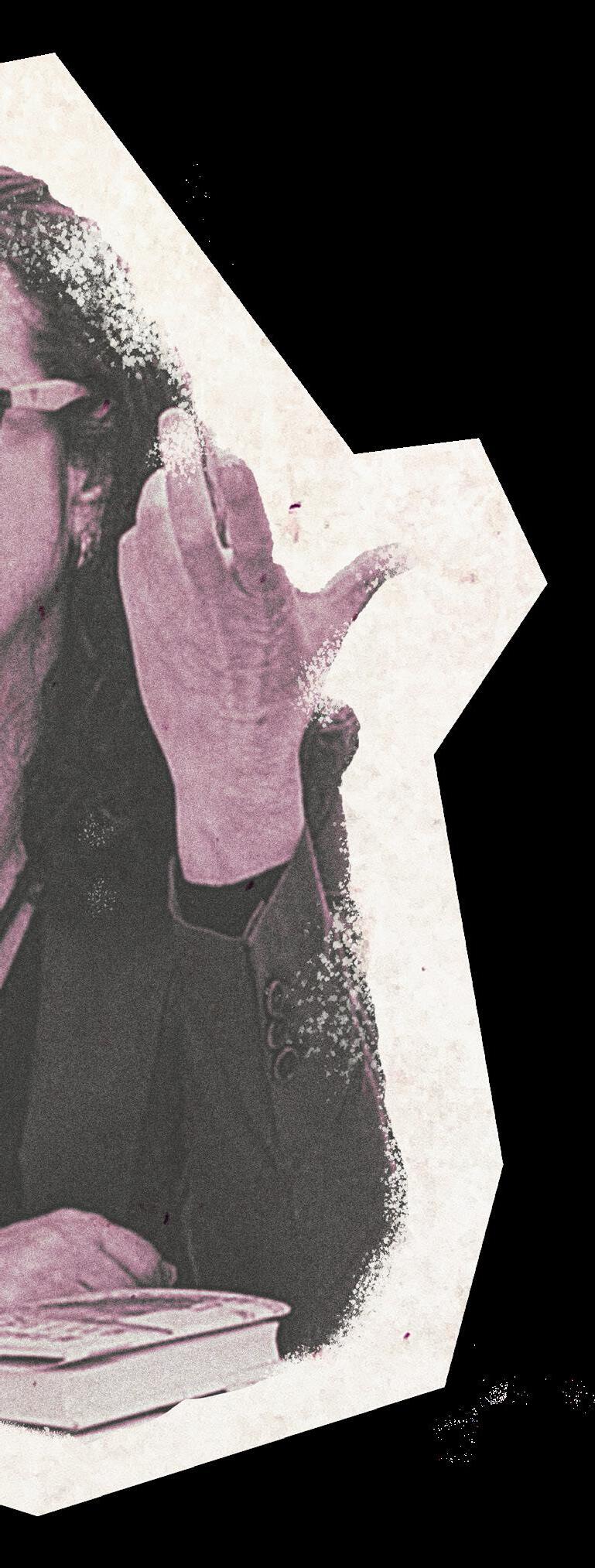
Graphic: Collin Wang










tudents enter college expecting “the best four years of their lives.” Many are on their own for the frst time: decorating their dorm rooms with posters, registering for classes they’re passionate about, and choosing which frat to party at on Friday night.
But this newfound independence can come with its own challenges. A college like Penn costs upward of $80,000. At times when work–study cannot pay the bills, some students embrace alternative strategies.
Sex work is not traditionally associated with higher education, but for between 2.1% and 7% of college students, it’s the form of work they turn to. While each sex worker has a unique experience, most students engage in sex work to achieve fnancial stability, according to a 2021 Iowa State study. Amid days of
The sex work community, its advocates, and its challenges, according to a Penn graduate student.
BY KATE RATNER & KATIE BARLETT
attending classes, studying for exams, and sometimes working an additional day job, students involved in the sex industry fnd themselves with an extra list of responsibilities.
Macy, a graduate student at Penn, has been a sex worker for the better part of the last decade. When asked how they chose their work name, Macy—who uses both she/her and they/ them pronouns—responded with a chuckle.
“I met a hot girl named Macy at a queer dance party,” Macy says. “I liked the name, so I stole it.”
Macy began working in the sex industry during their junior year of college. It all started on Tumblr.
“I was following someone who talked about camming, and I was really broke,” Macy says.
With no fnancial support from family and an underpaid work–study position, Macy began performing online sex work to pay her tuition and rent. She was drawn to the sex industry because it allowed her to make money “on [her] own terms.”
Sex workers engage in several forms of work that can be online or offine. Camming involves charging clients on websites and social media platforms for live or recorded sexual performance. When sugaring, sex workers spend time and offer sexual services to older, wealthy men in exchange for gifts and money.
Over the years, Macy has delved into many different areas of the sex industry, nearly all online.
They entered the industry with camming. A few years later, they briefy tried sugaring, but found that they didn’t enjoy it. After talking with another Tumblr user who’d moved from sugaring to pro–domming, they also made the switch.
Pro–dommes take part in domination, which can sometimes include topping, BDSM, or kink. “The main characteristic from my experience is just performing control over my client,” says Macy. “I say ‘performing’ because the reality is that clients have more power in those situations because we are doing criminalized work.”

Some of the risks involved: Clients may not pay, and are in a position to call the police on the workers or physically harm them without repercussion. If employers or colleagues discover her second job, Macy could be fred.
When interacting with clients, Macy has a number of strategies to help protect themself, including screening clients and ensuring work and personal social media photos don’t overlap. Like most sex workers, she has limits on what she can do, and is comfortable doing, with clients. As a prerequisite for an interview, Macy sent a series of ethical guidelines designed to protect their identity and the image of sex workers.
Throughout her sex work career, Macy has always had a day job. She emphasizes that sex work is among the most “humanizing” forms of work, as she’s able to set her hours and pay rates to align with her perception of the work’s value. The income allowed her to start seeing doctors and therapists at a time when she did not have health insurance.
“I’ve began to see [sex work] as a form of resistance to a lot of the really exploitative labor conditions that we live in,” Macy says.

Throughout our conversation, Macy repeatedly acknowledges the privilege they hold as a white sex worker. Black, brown, Indigenous, and trangender sex workers are disproportionately impacted by violence and policing, and are not always in the position to set their own wages or work as they choose.
“My safety, access, and income as a sex
worker is deeply informed by white supremacy and the way I beneft from that as a white person,” Macy says.
At the beginning of their sex work career, the stigma around their line of work affected Macy’s ability to share their experiences with most of the important people in their life. Their
Illustration: Wei–An Jin
boyfriend at the time was the only person who knew.
“There wasn’t OnlyFans; there were really janky old camming sites,” Macy says. “I didn’t feel comfortable or safe sharing what I did for money. Peoples’ attitudes about sex work were really harmful, and that was something
you could count on from everybody you talked to because of the lack of understanding and awareness.”
By 2020, Macy felt more comfortable sharing her story with friends and even a few select family members. She credits celebrities who have become more open about their sex work experiences and the sex workers’ rights movement, largely led by trans sex workers of color, for the shift in narrative that’s happened over the past couple of years.
“I was proud to identify as a sex worker and still am proud,” Macy says. “But not everybody has earned my story. I will always recognize that a lot of our experiences are very sacred and are meant to be held within our community.”
Macy remains selective with who they choose to share their story with. “Anytime I hear people—even jokingly—refer to one another or themselves as whores who are not sex workers, I [know] that’s not a safe person for me to talk about my experience,” Macy says.
The myths that surround sex work contribute to the stigma that sex workers face. Common narratives tend to portray sex workers either as victims with no other choice or empowered women who love the work. Macy contests this simplistic binary, emphasizing that the reality is more “complicated and nuanced.”
“In my mind, all forms of labor are coerced to some degree,” Macy says. “I don’t want to go to my day job, but I also don’t want to starve and die. For many people, sex work is the best available option to meet those basic needs. We should let people speak for themselves about their reasons for entering the industry and believe them.”
With the exception of Nevada, where prostitution is legal in regulated brothels, sex work is illegal in nearly all parts of the United States. Many sex workers are caught in “cycles of surveillance and criminalization,” according to Sex Workers and Allies Network, including charges related to trespassing and loitering aimed at street–based sex workers. These laws have detrimental impacts on the everyday lives of sex workers. Arrest and conviction records make it challenging for sex workers to fnd other kinds of work, access housing and other public benefts, vote, and qualify for fnancial aid, among other challenges. Further, sex workers disproportionately
lack access to health care and are less likely to report violence due to the criminalized nature of their work, according to the American Civil Liberties Union.
COVID–19 only exacerbated the inequities that sex workers face. According to the research program “Sex Work & COVID–19,” sex workers were forced to choose between their health and basic needs as sex work venues closed, client interest declined, the virus spread, and they were excluded from COVID–19 relief.
“I was extremely lucky because my work is primarily online,” Macy says. “I continued, although a lot of my clients were fnancially strained themselves. But many people work exclusively in person and don’t have the luxury of online work. They had to make the diffcult transition to online or continue in person while doing their best to stay safe. The pandemic really hit many of us hard.”
While Macy views decriminalization as an important step towards providing sex workers with access to safety and support resources, they believe legislation is only a small part of the solution.
“The liberation of all sex workers would take a complete upheaval of how our world works,” Macy says. “We would have to revise how we relate to each other and uproot all forms of systemic oppression to make conditions safer for sex workers.”
The California legislature has taken steps to improve working conditions and better the everyday lives of the state’s sex workers. In July 2022, Gov. Gavin Newsom signed the Safer Streets for All Act, which will help to prevent discriminatory arrests and harassment based on dress and career choice.
The act, which took effect on Jan. 1, repealed California Penal Code Section 653.22, which criminalized loitering for the intent to engage in sex work and permitted unjust profling of trans women and cisgender women of color, according to the ACLU.
“Anti–loitering laws are usually used to disproportionately arrest and imprison Black and brown folks, sex workers, trans people, and people at the intersections of all those experiences,” Macy says. “It’s an amazing step forward, but decriminalizing is the goal. When it’s criminalized, it is just really, really hard to offer people services who are being harmed in the industry.”
Many other college students like Macy are impacted by the stigma and bias that surrounds sex work, and sex work on college campuses remains neglected and underresearched. The Iowa State study highlights the stories of seven college students involved in sex work, urging campus offcials, administration, and health care services to provide support and visibility for sex workers on campus.
In a message to the campus community, one participant writes, “There are sex workers on your campus. We are here. In your classroom, downtown at the bars, in restaurants. We’re your roommate, your coworker, your friend. It’s not that we don’t want to tell you, we just don’t know if we can or how we could. We have to stay safe and stay hidden.”
But just because they’re hidden, doesn’t mean they’re not there. “Sex workers are everywhere, and the reality is that most people probably know at least one,” Macy says.
But Macy isn’t aware of any services at Penn that specifcally support student sex workers. They also believe in the importance of minimizing the fnancial burden associated with attending university as means of supporting student sex workers.
“When I was putting myself through college, I had very few options to pay the bills,” Macy says. “If I wasn’t under the pressure of absurdly infated tuition rates, I might have been able to sustain myself working ten hours a week in my work–study job. Anything that Penn can do to relieve the economic pressure will create a safer and more supportive environment for people, regardless of the work they’re doing.”
Ten years after their entrance into the sex work industry, Macy has started to wind down, working with only two of her long–term clients. The work is no longer the source of her rent, but instead contributes to forms of joy, including treating her friends, paying reparations, and donating to mutual aid efforts.
“When you’re in a feld for ten years, you get pretty good at it,” Macy says. “I’ve been able to develop myself as a worker and build really strong relationships with some clients. My relationship to sex work has gone from a place of scarcity to one of abundance, and that’s really beautiful for me.” ❋
To support student sex workers, check out this resource: supportforstudentsexworkers. org.
This month: octuplets, feminist theory, and gerbiling (DON'T look it up).


"Ive got eight babies to squeeze out."
"Ive got eight babies to squeeze out."
treet s ew cto mom
treet s ew cto mom
"I never got past my oral–aural fxation stage.
"I never got past my oral–aural fxation stage.
— With AirPods in His Mouth
— With AirPods in His Mouth
"They gave me free drugs because my tits were out."
“I love the guy using the virginity as a social construct argument to get in a girl’s pants.”
“I love the guy using the virginity as a social construct argument to get in a girl’s pants.”
— The Guy in Question
— The Guy in Question me drugs because my tits were out."
— Castle Darty Refugee
— Castle Darty Refugee
“I looked up hamster tube and it gave me porn … that’s not what I wanted.”
“I looked up hamster tube and it gave me porn … that’s not what I wanted.”
efnitely ot ichard ere
efnitely ot ichard ere








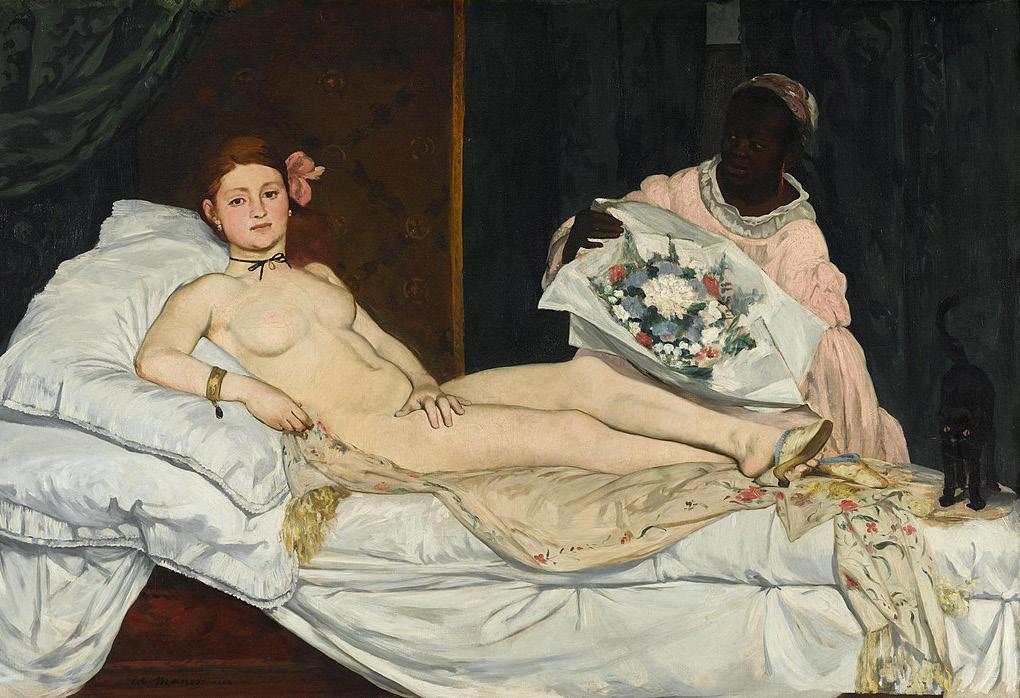

Newspaper critics at the time were quick to scrutinize the avant–garde painting as one that broke from tradition—and not in a good way. In contrast to conventional works which prioritized naturalism, impeccable technique, and classical subject matters, Olympia boldly and overtly rejected tradition with its aggressive, imperfect brushstrokes and harsh lighting and coloration. But, while Olympia certainly breaks with artistic predecessors, it still references tradition—just not in a manner the Academy appreciated. Clearly inspired by Titian’s Venus of Urbino of 1538, a pious, sensuous representation of Venus, Manet created his own warped version of the fgure, stripping what once was a goddess of her moral purity through subtle sexual details.
BY JESSA GLASSMAN
André Dombrowski, Frances Shapiro–Weitzenhoffer Associate Professor of 19th Century European Art, describes Manet as "the artist who is perfectly aware of tradition, and actually cites it very deliberately, but at the same time updates it in a way that it doesn't exactly become unrecognizable. But there's also a high degree of disruption.”

Despite having been painted more than 150 years ago, Édouard Manet’s Olympia continues to resonate throughout the art world. In 1865, the painting debuted in Paris’ prestigious Salon, controlled by the French Academy of Fine Arts, immediately scandalizing the scene. The work subversively approached the reclining female nude with its daring technical, stylistic, and thematic choices. While she was created by a man, Olympia has consequently joined the ranks of groundbreaking and infuential women, both in the art world and beyond.
Specifcally, situating the title of the work within its historical context reveals that the sitter is a courtesan. The fgure’s stark, pale skin tone (especially compared to the warmth of Titian’s Venus ) shocked critics, who likened her to a corpse. Manet does away with Titian’s soft, blended technique, using textured brushstrokes which give the work a sense of harshness. Olympia defes traditional notions of femininity, with stubble under her armpits as well as dirty hands and feet. While Venus lays clean, pure, and comfortable on her impeccable couch, Olympia does the opposite. She is stiff, sitting upright on wrinkled sheets.


She covers her crotch with ownership and power, seen in the deep shadowing of her hand that indicates it is fexed. Venus, by contrast, lays her hand gently and in a position many have characterized as inviting, complementing her sultry gaze. Most starkly, Olympia is confrontational—a demeanor, particularly for a sex worker, that was unacceptable and baffing to the French art world at the time. Even the black cat at the edge of the bed offers a contrast to Titian’s Venus, who lays with an adorable puppy by her feet; it symbolizes deviant sexuality as opposed to fdelity.
While the reclining female nude is an artistic motif portrayed time and time again even before Manet was born, through technical and thematic subversions, the artist effectively stirred controversy that, depending on your perspective, either marred or revitalized the trajectory of art. Professor Dombrowski explains this phenomenon: “From the moment Olympia is shown in the Salon of 1865, it becomes kind of the touchstone for avant–garde representations of female nudity.” Some artists who interpreted and responded to the work in later art history include Paul Cézanne, in his A Modern Olympia (1874), Paul Gauguin in Spirit of the Dead Watching (1892), and Henri Matisse in his Blue Nude (Souvenir de Biskra) (1907).
But while Manet and those inspired by Olympia certainly dismantled artistic expectations with an avant–garde approach, many gendered norms at the time remain intact in their works. Professor Dombrowski gives some much–needed historical context: “Remember that when Olympia is painted, women cannot vote. There is almost a complete disenfranchisement of women in the political sphere, but also in the artistic sphere. The Academy of Fine Arts in France doesn't admit a woman until much later in the century,” he says. “This has produced a 19th century in which the presumed position from which one paints, from which one looks, from which one buys sex from, from which every kind of commercial and emotional transaction originates, is male … And for all the kinds of questioning of tradition that Manet does, he does actually quite little to interrogate or to dismantle that overarching presumption he's working with.”
Olympia cannot be blindly considered the pinnacle of revolution and subversion in painting. However, it shook tradition with its overt sexuality, sending ripples in the art world. Because she started to toy with social and artistic norms, Olympia is key to today's radical art—in all her unapologetic glory. k




















heard these jarring words by the
The message that they’re less desirable is powerfully promoted through a combination of media featuring white love stories and actors, and boys who believe the only women worthy of affection are those who look like these stars. The worst part is that Black women still aren’t safe from these comments—even in Black spaces.

Though the discrimination that Black women face from those outside their community has been more widely discussed, Black men’s lack of support for Black women should be addressed. There is a hidden divide between Black men and women, both romantically and otherwise, that needs to be bridged.
Before we can diagnose the cause of the divide, we need to debunk the idea that “a preference is just a preference.” While this is true, everyone should consider where these preferences are born from. It’s no secret that we live in a world where “white is right.” Society teaches men to favor Eurocentric displays of beauty and women to strive for European features. Trends such as contouring your nose to look slimmer, applying makeup to make your eyes appear larger, and accentuating high cheekbones are all modeled after a white image of attractiveness. It’s no coincidence that the demographic that shares the least amount of features with America’s socially dominant group is the one that’s most consistently put down: Black women.
Multiple articles have referenced studies demonstrating that Black women are at a disadvantage when it comes to dating apps. They are the least likely to be considered attractive, and the least likely to meet their match. This is a direct result of society’s labels for Black women—angry, loud, ghetto—all traits that serve

Besides the fact that this is incredibly insensitive, it also manages to completely avoid confronting the fact that there may be an internal bias present.
Black men have had these white ideals of love and beauty permeate their viewpoints as well. Instead of uplifting Black women and defending them against these harmful stereotypes, they participate in the trend of making Black women the butt of the romantic joke. Yet, the biggest issue with Black men who choose to date outside of their race is their reasoning for why they do so. They only describe what they don’t like about Black women, rather than what they do like about women of other races.
While the two reasoning styles may seem equivalent — after all,they lead to the same conclusion — they are in fact vastly different. Instead of positively uplifting the group they prefer, they forcefully demean another. While at the end of the day, everyone is free to have whatever preference they please, it’s diffcult to hear this hate coming from the very members of the community that are supposed to be supporting you.
There’s a different logic behind choosing to date only within your race, as some prefer to be with those who possess an intimate knowledge of their heritage and traditions, but Black men have demonstrated weaker same race preferences than other groups—leaving Black women unprotected by the very men that are supposed to be standing with them in solidarity. Even in the group of Black men who self–identify as liking Black women, problems still remain. Texturism and colorism, both archaic
appendages of the problematic racial hierarchy America was built on, still run rampant within this community. There are many sentiments of preferring loose curls over “nappy hair” or lighter skin to darker hues. The journey to fnding love as a dark skin Black woman with kinky curls will be harder still than that of a light skin woman with wavy hair. Black women in America already marry less on average, dark skin Black women even less so.
All this just serves to leave Black women unprotected by their male counterparts—and this divide doesn’t stop at romantic endeavors. Black men don’t stand with Black women in other social settings, which may be directly related to their lack of interest in Black women as romantic prospects. It’s been shown on mul tiple occasions that humans are predisposed to treat those we consider unattractive worse, with the American Journal of Sociology publishing research that fnds Black women suffer from this phenomenon at a higher degree.
While this study was in the context of workplace earnings, it makes perfect logical sense that this curse would affect other social interactions as well. As a Black woman myself, I’ve been in numerous situations where Black men have let micro– or macro–aggressions go unreprimanded, or worse, joined in with the laughter. Black men who don’t consider Black women attractive feel no desire to defend them and will allow them to be treated poorly in order to cater to the group they fnd attractive.
The message I’d like to end with is this: Black men, take this as a call to action. Confront your internal biases and stand up for Black women. These are your mothers, sisters, grandmothers, aunts, nieces. Black women deserve more respect than they are currently given.
BY OLIVIA REYNOLDS




Venturing through the Philadelphia Museum of Art (or any art museum really), you’re guaranteed to see a hypersexualized, “ideal” version of the female anatomy: ample bosoms, round bottoms, and long fowing hair. Male physiques at the museum are seldom presented with the same objectifcation for voyeuristic purposes. But Macho Men: Hypermasculinity in Dutch & American Prints is unlike other exhibitions, showing aggressive men teeming with testosterone. In the exhibition, late–16th– century Dutch renditions of “manhood and citizenship” coexist alongside American Great Depression representations of the working class. Featuring inhuman proportions of rippling
abs, chiseled muscles, and thick veins, Macho Men verges on the grotesque. Its three galleries contemplate overly muscular men against the museum’s backdrop of passive femininity.
The frst works showcased are Philadelphia artist James A. Rose’s Null and Void . Rose’s striking graphite drawings of his face explore “issues surrounding spirituality, race, and sexuality,” through the lens of his experiences as a gay Black man. Rose says he is both “seen and not seen usually for all the wrong reasons.” This perspective runs through the rest of Macho Men . Modern audiences can now view these paintings of brawny white
The Philadelphia Museum of Art’s new exhibition takes a hard look at the sensationalized male physique.
BY HANNAH SUNG


men—made by white male artists—with a 21st–century understanding of sexuality and constructs of gender and race.
In the fght for independence of the Dutch Republic from the Spanish monarchy, burly men symbolized the nationalistic efforts of Dutch civilians. Hendrick Goltzius’ 1589 depiction of The Great Hercules presents the Greek mythological hero reimagined to personify the Dutch struggles against tyranny. With a Dutchman’s mustache and thick muscles, Hercules symbolizes the seven united provinces of the Dutch Republic joining together. Jan Harmensz. Muller’s engraving series Fortune Distributing Her Gifts from 1590 depicts nearly a hundred nude muscular men entwined in fght for Fortune personifed. Many are portrayed as though posing and fexing their bulbous muscles.
Centuries later, Depression–era lithographs of muscular men performing industrial labor highlighted the productivity of the proletariat. Arthur Murphy’s 1936 Steel Riggers No. 2 Bay Bridge lithograph depicts the violence that broke out between striking dockhands and strikebreakers in San Francisco, with one caveat. The three workers are nude, with just helmets for protection. They pull on a rope, faunting their muscles. Rockwell Kent’s 1941 Lowering a Pipe Section through a Building Platform similarly employs a self—explanatory title, for an advertising campaign promoting the United States Pipe and Foundry Company. But the focus is the muscular men, which prompts the audience to examine the male subjects in relation to each other rather than the pipe itself.
Richard Correll’s depiction of the American folk hero in Packing Lumber was published by the Works Progress Administration in
the 1937–38 Paul Bunyan series. The broad–shouldered lumberjack takes up the entire frame as he looks up with determination, carrying a large piece of wood that demands adoration for the feat. Juxtaposed with Dutch artist Jan Harmensz. Muller’s The Fight between Odysseus and Irus from 1589, both paintings illustrate superhuman fgures whom ordinary men should idolize. The Greek king of Ithaca is shown returning from the Trojan War, destroying an enemy without hesitation. Another of Muller’s works includes Cain Killing Abel from 1589. The Biblical characters are seen in combat in the frst murder—but both are nude and muscular.
In line with the mythic heroes, an overwhelming amount of the work in the exhibition features Greek mythological fgures. Dutch artist Hendrick Goltzius’ The Farnese Hercules from 1592 renders the backside of the well–known divine protector, as two ordinary mortals stare up at him. Because Hercules is nude and facing away, attention is directed towards his back muscles, buttocks, and enormous thighs and calves. The two male spectators are fully clothed, and their faces are in awe. Similarly, Goltzius’ engravings The Four Disgracers show Icarus, Phaeton, Tantalus, and Ixion all “falling from grace” due to their various shortcomings. Their positions draw focus to their muscular thighs, butts, and arms, rather than their obscured faces.

A standout piece of the collection is The Sculptor by American artist Michael Gallagher. The 1937 wood engraving depicts another WPA artist, Yoshimatsu Onaga, working on his own sculpture. The hypermasculine version of Onaga is similar to the gargantuan, bulky sculpture he is hammering, titled N.R.A., after the National Recovery Administration, which
advocated for workers’ rights. Historically apt, Onaga lost his WPA employment for being a Japanese citizen. Another politically charged work is Primary Accumulation , by Hugo Gellert, which depicts nude men with hammers next to the The Communist Manifesto, hoping to empower the proletariat against the exploitation of capitalism. Gellert, the founding editor of the socialist magazine The New Masses used art to mobilize the working class.
Many of these paintings beg to be seen through a homoerotic lens. American artist Paul Cadmus’ The Fleet’s In depicts servicemen having a boisterous time together. Cadmus, who was gay, often included subtle queer interactions between the men in his etchings, such as a man offering a sailor a cigarette. His subjects are typically turned away from the audience, drawing focus to the butts and bulges of the sailors. The Last Fall by American Richard Correll shows two wrestlers in an almost romantic embrace, which would be indisputable if not for the telltale wrestling ring’s ropes behind them.
The depictions of superhuman versions of masculinity served various purposes, whether as pure propaganda or to provide a sense of national unity. Throughout history, the ideal version of manhood is one with rippling muscles—used for labor, combat, or civic duty. Apparently, it’s the perseverance of man that gave strength to the masses during times such as Spanish imperialism and the Great Depression.
However, upon closer examination, these works show the faults of touting this image as the masculine ideal. Exploring Macho Men with an understanding of hidden homoeroticism throughout history can help dismantle the constructs around masculinity being about brute strength and aggression. k
IThe Guerrilla Girls are reclaiming the nude female body BY
LUIZA LOUBACK FONTES

walk through the air–conditioned corridors of the São Paulo Museum of Art, appreciating oil paintings in golden frames and white marble statues. Suddenly, I am stuck by a bright yellow poster, “Do women have to be naked to get into the São Paulo Museum of Art?”
The poster was made by an anonymous collective of artists and activists named the Guerrilla Girls, a radical art group that has made projects, posters, and interventions from New York to Shanghai, even passing through Istanbul, London, and São Paulo.
The electric yellow poster found in MASP highlights that only 6% of the total number of artists in the collections that were on display are women; on the other hand, 60% of the works represented are female nudes. As a museum visitor, the poster led me to refect on all the previous museums I have walked through: How many times have I viewed nude female bodies on display in artistic works? What does nudity tell us about the spaces reserved for women in the art feld?

The connection is even more complex when acknowledging that the word pornography appeared initially in an artistic context. In the 19th century, the German historian C. O. Müller used the Greek word “pornography” (meaning “writing about prostitutes”) to refer to art museums’ collections. There is still much controversy in the art feld that pornography cannot be considered art. If it’s art, it’s not pornography. Which begs the question, where do we draw the line between the female body as a sexual fgure versus an artistic fgure?





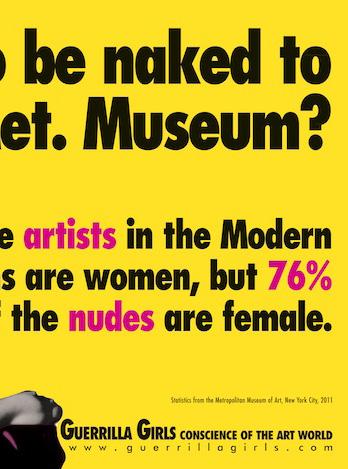
However, since art has been mainly consumed throughout history by elites, female nudity is a form of perpetuating “soft porn” for the wealthy and dominant circles of society. In fact, artistic circles consent and approve of the exposition of nudity in art, but not in real life. For example, in 2016 the performative artist Deborah de Robertis undressed in front of Olympia , painted by Edouard Manet in 1863, and reproduced the pose of the nude fgure facing the visitors. Robertis was arrested following the museum’s complaint of sexual exhibitionism. This event further proves that the real–life female body has been marginalized and sexualized to a point in which it cannot be considered art, only pornographic. Society puts value in art pieces that contain nudity in renowned museums and galleries, but marginalizes those in real life.
In her program, The Shock of the Nude, Mary Beard, Cambridge scholar and classicist, criticizes the abundance of female nudes and how the sexualized female bodies in art meet male desires. According to the author, for centuries female nudity paintings were made by men, commissioned by men, and aimed at male delight, essentially serving as soft porn for male elites.
their own right, but have been historically often underpaid and underrepresented compared to their male counterparts. If museums are not showing a diverse range of artists, then they are no longer serving the purpose of documenting the history of art, but the history of power and money. The exclusion of female artists from great art museums is an institutional issue, embedded in sexism from the male–dominated gallery owners and art critics.
The female nude in art has served to delight male artists and male viewers, but women have begun to utilize art and their own bodies to reclaim power over the narrative. Nudity has become an instrument to challenge sexist standards. In fact, many women began to use the naked body as a symbolic weapon in performances and protests. Carolee Schneemann used the naked body as a canvas, even winning a prize at the Cannes Film Festival in 1969 for a movie that was explicitly sexual. Marina Abramović shocked the art world with her performances, one in which she created a naked living doorway. Viewers were forced to confront nudity in art and in real life at the same time, rather than passively observing it.


Beard mentions how rich, white men support the museums with donations of money and works of art. The Guerrilla Girls expose a disturbing dichotomy: In 1989, the price of a singular painting by Jasper Johns ($17.7 million) could purchase at least one work from 67 women artists—including Mary Cassatt and Frida Kahlo. These women were renowned in
Nudity has always been a factor in female representation, but its reasons and purposes have changed over time. It would be reductive to fx a single meaning for nudity, losing a series of uses and setting back women’s power by simplifying it to the instrumental use of men. Even though the male gaze is still at the center of using the female body for proft and for consumption, women artists are reclaiming the narrative. k



Illustration: Collin Wang
What he means, and what Bones and All gets straight to the heart of, is that there’s a kind of love that’s greedy and all -con suming. It’s empathetic. It’s -cannibalis tic. It’s hungry. k
“That’s how it is when it’s like this,” he says, -try ing desperately to convince her of how he feels. “That’s how we’re like.”
“I don’t feel right around you,” Marin screams, flailing after a harrowing -emo tional encounter. She’s trying to run away again, torn apart by anger and grief. But Lee remains immovable. For once in the film, he stands still.

However, Russell and Chalamet sell the doom–tinged romance with -every thing they have. They hurl all their love, despair, and hate at each other, -particu larly in a climactic fight that illuminates the soul of the film.
flict. The film also loses energy after the pasts that Maren and Lee are both -run ning from reappear. It isolates the two of them from one another, and the film never fully recovers its rhythm.
The film never quite decides if it wants to be a goreful romance or an arthouse horror, and it settles for neither, perhaps losing the highs it could’ve achieved by picking one or the other. Chalamet and Russell drive the movie forward with their wild romantic desperations, but it can feel oddly neutered in some points, drawing back from Lee and Maren’s -dis agreements over how to best feed -them selves rather than digging into raw -con
flick. They coalesce better in some -plac es than others: When it transforms into a rough and gorgeous drifter love story, a la Bonnie and Clyde, it’s near -perfec tion. Chalamet and Russell have a tender chemistry, and they both ache with -un fulfilled aspirations.
Bones and All juggles many genres: road trip movie, lyrical romance, gory horror


ID, OH, MT, VA. The very first shots of the film hone in on landscape paintings in the hallway at Maren’s high school, and the most glorious sections of the film simply follow Maren and Lee across the most gorgeous plains and under purple skies. It sets the lovers right into the wide open, American heartland and frames them as perpetual outsiders, only -be longing to each other.


The film hustles through as many states as it can, flashing them up on the screen:
When Bones and All pulls back from its tight focus on Maren and Lee, it’s a sprawling, nomadic road movie. -Gua dagnino indulges his love of painterly American landscapes just as much as his gory tableaus and unsettling close ups.
ing cars and sleeping under stars, and killing with gusto. From then on, Bones and All follows our two young lovers out on the lam. Russell gives Maren all the freshness and openhearted romanticism of a classic young adult heroine—which she is. Bones and All is adapted from -Camil la DeAngelis’s young adult novel of the same name, and Guadagnino infuses the original story with a gruesome edge and a natural, grounded atmosphere.
Sully tracks his victims with a -sin gle–minded hunger and tries to relate to Maren with a sinister vulnerability. It’s not long before she cuts loose and runs again, this time crashing into Chalamet’s Lee. The languorous bloody beginning is jolted to life by Chalamet’s electric -pres ence. Lee comes to the defense of Maren after she’s harassed in a grocery store, goading the drunk customer into -pick ing a fight with a violent physicality. He wildly grabs at moments of joy, breaking into a house and dancing to Kiss, -steal
In one of the film’s most -harrow ing scenes, Maren is smelled and then followed by Sully (a wholly original Mark Rylance, who will make your skin crawl.)


Maren returns, soaked in blood, and her father’s reaction, “Not again,” lets the horror fully sink in. Maren is a born and bred killer, and she’s only getting -hun grier with time. As soon as Maren turns 18, her father is nowhere to be found, leaving Maren with only a vague clue to her mother’s whereabouts and -horrify ing origins. Maren is an eater, with an innate and unexplainable desire for -hu man flesh. ‘Eaters,’ as the cannibals call themselves, all follow different moral codes and can literally find their fellow cannibals by sniffing each other out.
Try not to shriek when Maren bites off a bit more than she can chew.


The opening ten minutes hook you right in; they’re a perfect horror short. Maren (played by the excellent Taylor Russell), is the new girl in town and is in vited to a sleepover. But her father (An dré Holland) isn’t so keen; when Maren gets home, he deadbolts her bedroom door shut. She sneaks out anyway, un screwing her window open, hungry for human connection (or just for humans).
tic, gentle, and beautiful—also yes. Many viewers may be turned off by the prem ise of cannibals eating their way across America’s great plains and sprawling highways, but those who find their inter est piqued will surely be rewarded. This is a film with a lot of meat on its bones.
ones and All is impossible to turn away from. Grimy, gory, gross— absolutely. Swooningly roman
BY CATHERINE SORRENTINO
Courtesy of Ana Krutchinksy
Graphic: Jojo Buccini Illustrations

Because of the distance social media affords between consumers and content creators, there’s no definitive way to distinguish what’s real or what’s for show.
With @anakrutch, it doesn’t matter that the characters we’re relating to are made up. Krutchinsky admits she draws from her real–life experiences to inspire her fictional stories because it’s a much less invasive or attention–grabbing form of vulnerability. “I have [a fear] with my page, that if I do this for too long, it stops being authentic,” Krutchinsky articulates. “I feel like a lot of writing and poetry ends up becoming about the artists gratifying themselves by putting it out there. I’m trying to stay away from all that and just keep it purely a matter of ‘This is me, do you feel the same?’” While we resonate with the characters Krutchinsky invents, we can recognize that these stories are snapshots of fictional lives, and there’s nothing much to be idealized about or overly invested in. These characters are strangers to us, but there is still the comfort of feeling like you know them, that cathartic feeling of finally feeling as if someone out there understands. k
ing—which is when strangers (or sometimes, friends) unload their traumatic or stressful experiences on another person without that person’s consent—has frequently been criticized for being bad for people’s mental health, listeners, and sharers alike. Just last month, Street writer Emma Halper analyzed the trend of TikTok users telling dramatic stories accompanied by Nicki Minaj’s song “Super Freaky Girl,” noting that viewers only want to hear the juicy drama of a person’s life, but don’t want to reckon with the emotional fallout that comes with these challenging life experiences. Moreover, social media influencers are deemed unique from traditional -celeb rities because of their vulnerability and authenticity. We feel like we know -influ encers intimately, even though we don’t. When social media users post clickbait videos about breakups or breakdowns, these stories feel real and personal, but often they aren’t. In 2020, -communica tions scholar Evie Psarras utilized the term “emotional camping” to describe the way women on Bravo’s The Real Housewives play up their emotions for the cameras to gain and maintain a following. However, this phenomenon isn’t unique to reality TV personalities. Just think of influencers known for their drama, like Trisha Paytas or Jake Paul. There seems to be a wealth of creators who utilize these same methods to capture audience attention.
TikTok’s short video format and soundbites have also made it a frequent platform for storytelling—but not usually in the @anakrutch way. Trauma dump -
Under each story, people fill the -com
ries—on a platform where it seems like everyone is trying to artistically snapshot their lives into 60–second videos, -@ana krutch’s videos spotlight the little -mo ments. She articulates the experiences many of us encounter but don’t often talk about—the slow loss of a friendship, -miss ing your parents as you grow older, or even the lonely inkling that you’re no one’s -fa vorite person.
cause of the rare authenticity of her -sto
ments with messages affirming these -ex periences or sharing their own: “How is it possible that I relate to every single one of these?,” “These are sad, but also very -hu man… and I like that.” Krutchinsky sees these comments and knows that these -sto ries resonate with her followers. “That’s my favorite part of all this: it opens the door for other people to feel safe,” Krutchinsky says.
Krutchinsky’s work is so appealing -be
Illustrator Name

Ana Krutchinsky, a former Fintech -pro fessional, longtime artist, and the creative voice behind @anakrutch, has always been fascinated by art and visual storytelling. Though the people she writes about are not real, followers have identified with the variety of human emotions and -experienc es she showcases. She started her page as “a way to objectively look at the way I feel about things, through made–up -charac ters,” she explains. “And the more I did it, the more gratifying it became because I started to realize that all these weird little moments I have, everyone else has too.” TikTok is known for sparking idealized lifestyle and beauty trends, and like all -so cial media, it’s a space where people -show case the best parts of their lives. Despite the global connectivity TikTok provides, social media in general can be extremely isolating when you’re constantly -compar ing yourself to everyone else who seems to be living their lives to the fullest.
first captured TikTok’s attention with the story of Gilbert, an old man missing his deceased wife. People filled the comments with stories of their own grandparents, or simply their fears of growing old. @anakrutch’s fictional short stories, at first self–contained, are subtly connected and known for their simple art style and emotionally moving words. -De spite publishing videos with no previous following and no hashtags, her account has ballooned to over 200,000 followers and 4 million likes within a month.
n November 6, 2022, @anakrutch
OBY NAIMA SMALL

However, students should be aware of exploitative organizational practices. Most importantly, they should be aware that you can still be passionate about social justice work and find a job—whether corporate or nonprofit—that values your labor. Passion exploitation isn’t limited to nonprofit -or ganizations: It’s also the newspapers that hire young, unpaid staff writers, or the artists expected to sell free designs to “get their name out there.” At the end of the day, when looking toward your future career in social -jus tice, know that the promise of experience doesn’t equate to compensation. And, as @house4all points out, many corporate jobs offer the flexibility for workers to also spend time organizing and giving back to their communities. There needs to be a balance between passion and realism—and never let your passions drive you to -deval ue your time and energy. k
Their comments filled up with others sharing their poor salaries and equally poor treatment while working in the nonprofit sector.
In a viral October tweet, unhoused rights organizer @ahouse4all wrote, “My advice to young college kids aspiring to work at nonprofits: Don’t. Go work for a soulless corporation that pays you in real money and has a decent work life balance and volunteer with a mutual aid org on your own time. These nonprofits are good person soul sucking vampires.”
This is not to say that all nonprofit work is exploitative—so many of these positions and organizations fulfill their social -mis sion while still offering interns and -em ployees decent pay and a solid work–life balance. I’ve personally had great -experi ences working at student–led nonprofit -or ganizations part–time, even unpaid ones.
Insecure , main character Issa Dee (played by Issa Rae) spends the first three–and–a–half seasons working for “We Got Y’all,” a community nonprofit focused on improving Black children’s access to afterschool programming. Ironically, Dee is the only Black person on the entire team, is extremely underpaid, and is overworked, something that the show frequently highlights for comedic purposes.
for a raise, or the frequent “promotions” that just mean more work without a pay raise. Similarly, on the HBO show
Much of the discourse around passion exploitation centers around pay—while nonprofit CEOs can make upward of $120,000 a year, many employees have to rely on public benefits to get by. As noted by the UN student protestors, passion exploitation is particularly harmful to low– or middle–income individuals who can’t afford to live with little pay in expensive areas. A 2013 report by the Urban Institute found that, when faced with financial hardship, “most nonprofits choose to cut salaries, benefits, and other costs long before scaling back their operations.”
with TikTok creator Nicole Daniels’ (@ nicoleolived) “POV: Your Nonprofit Boss” series racking up thousands of views. Her videos comedically highlight the impossibility of asking your nonprofit boss
“Passion exploitation isn’t limited to nonproft organizations: it’s also the newspapers that hire young, unpaid staf writers, or the artists expected to sell free designs to ‘get their name out there.’“
Shady nonprofit organizations have been parodied on TV and social media,
For students working in nonprofit or social justice spaces, unpaid internships and work remain the norm, even as more criticism is leveled at them across the board. People still sign up for these positions in droves because they want exposure, or because the nonprofit’s mission fulfills an important community need or advocates for a necessary global cause.
Most students who are deeply passionate about social justice believe they will work in the nonprofit field throughout their time at Penn and beyond. But reality seems to strike hard when students begin looking for summer internships—a pattern emerges: unpaid work, long hours, or a minimum wage salary in a city like New York with exorbitant living costs.
Though the realities of finances, talent, and other factors may push people in different directions over time, at a school like Penn, a good number of students are still willing to take the necessary risks to chase after their dream jobs.
rom a young age, most people are told to follow their innate passions when choosing a career.
FWith this, the term ‘passion exploitation’ has been utilized to describe the way social justice organizations pull dedicated workers in and exploit their labor under the repeated rhetoric of “working for a good cause.” Though many employees know that their efforts would be properly compensated elsewhere, they stay because they love the mission. For example, the United Nations offers only unpaid internships, instead promising interns that they “will be exposed to high–profile conferences, participate in meetings, and contribute to analytical work as well as organizational policy of the United Nations.” In February 2017, about 200 UN interns from New York to Geneva protested the UN’s reliance on unpaid labor, highlighting the fact that it reduced diversity within the organization and actively conflicted with the UN’s outward–facing mission of social equality.
BY NAIMA SMALL
It’s time to confront the harsh realities of a career in social justice.

Spring Garden St.
Tickets $25, doors at 7 p.m., show starts at 8 p.m., 1026
Feb. 28 + Mar. 1: Weyes Blood @ Union Transfer Folk–pop singer Weyes Blood released her new album, And in the Darkness, Hearts Aglow to critical acclaim back in November—and now, she’s -vis iting Philly for her “In Holy Flux” tour! Catch her at Union Transfer for a night of wistful -mel odies, soaring vocals, and modern -myth–mak ing.
Free, 4 p.m. to 6 p.m., 701 Arch St.
Feb. 26: Conversation with Bernice A. King @ African American Museum of Philadelphia Join Bernice A. King, CEO of the nonprofit organization the King Center for Nonviolent Social Change, for a talk at the African American Museum of Philadelphia in honor of Black History Month 2023. King is an accomplished lawyer and minister, and the youngest child of civil rights leader Martin Luther King Jr.
21+, tickets $12–$20, doors at 11 p.m., show starts at 11:30 p.m., 1009 Canal St.



Disco, a ‘70s–themed dance ball hosted at the Brooklyn Bowl? At Street, we’re raising our glasses to Scandi supergroups and simpler times.
The ‘70s have been back for what seems like forever, with shag cuts and flare jeans dominating all our feeds throughout 2022. So why not harken back to the era with Gimme, Gimme
Feb. 25: ABBA Dance Party Night @ Brooklyn Bowl
21+, tickets $6, 10 p.m., 1250 N. Front St.
Missing the days when clubs would blast boy band and pop diva hits? If you’re a fan of artists like Taylor Swift, One Direction, the Jonas Brothers, and 5SOS, join Philly–based promoter DJ Deejay for a fun night of music and drinks at Kung Fu Necktie.
Feb. 24: DJ Deejay’s Up All Night Philly (TSwift, 5SOS, One Direction, Jonas Brothers music) @ Kung Fu Necktie
21+, tickets $25, doors at 8 p.m., show starts at 9 p.m., 923 N. Watts St.
Rapper CupcakKe, known for her sex–positive lyrics and bold stage presence, is slated to make an appearance at live music venue WOW Philly on Feb. 24. The event description is as mysterious as it gets, so we have no idea if she’s actually going to be there—but it’ll be a crazy time either way.
Philly
Feb. 24: CupcakKe @ WOW
21+, tickets $15, 9 p.m., 1200 Callowhill St.
Arts is hosting an emo Taylor Swift–themed Anti–Valentine’s day bash (Taylor Swift + emo = SWEMO). Roll through for a night of lighthearted dancing and fun. No heartbroken wallowing allowed—unless you quote Taylor, of course.
Calling all broken hearts: Underground
Feb. 10: The SWEMO Experience AKA Anti-Valentine’s Day @ Underground Arts
Tickets from $32.50 for general admission, 8 p.m., 29 E. Allen St.
4” and “Grapefruit.” Lo will be joined by electro–pop artist Slayyyter.
well as more recent tracks such as “2 Die
Known for her grungy take on pop music, she’s the artist behind songs like “Disco Tits” and “Habits (Stay High),” as
Tove Lo is stopping by Philly on Feb. 9 on her tour for her 2022 album Dirt Femme .
Feb. 9: Tove Lo @ The Fillmore
Pkwy.
Free, 6 p.m. to 7 p.m., 2600 Benjamin Franklin
Hypermasculinity in Dutch & American Prints through this discussion, complete with a Q&A.
Have a conversation with Philadelphia artist James Rose and curator Jun P. Nakamura about representations of gender, sexuality, and masculinity in art, both today and historically. Take a deeper look at the February exhibition Macho Men:
Feb. 9: Reckoning with Masculinity @ The Philadelphia Museum of Art
2I.
Free, 3:30 p.m. to 5:30 p.m., 319 N. 11th St., Room
own MP3 boombox? Iffy Books, a small bookstore that aims to make people less reliant on big tech, is hosting a free boombox–making workshop that’s open to everyone on Feb. 5. Participants are encouraged to bring scavenged speakers if they can, and boombox–making kits will also be available for purchase.
Curious about what it takes to create your
Feb. 5: Make Your Own Boombox Workshop @ Iffy Books
St.
$15 for general admission, $47.50 for the full paint–and–sip experience, 3 p.m., 3601 Market
music videos, listen to all her songs mixed by a live DJ, and take home special hand–painted items! At this four–hour event, after the two–hour painting session is over you can enjoy drink specials and food from Pace & Blossom’s restaurant.
In honor of Rihanna’s upcoming Super Bowl performance, University City restaurant and lounge Pace & Blossom is hosting a paint–and–sip event featuring all of RiRi’s classic hits. Watch Rihanna’s
Feb. 4: Paint & Lit Rihanna Tribute @ Pace & Blossom
Free, various times, inside Fisher Fine Arts Library, 220 S. 34th St.
But few know that Courbet was also an accomplished landscape painter—see for yourself at Arthur Ross Gallery, where a newly discovered waterfall painting will be on display February through May.
Today, Gustave Courbet is best known for his pioneering realism, best seen through his layered, atmospheric portraits.
Rediscovered @ Arthur Ross Gallery
Feb. 4–May 28: At the source:
$10 for general admission, various times, 401 S. Broad St.
Perhaps the most important icon in the history of cinema, Jean–Luc Godard radically -disrupt ed the perceived norm and renewed the very basic vocabulary and grammar of filmmaking again and again. Paying homage to the giant of cinema who passed away last September, Lightbox Film Center has curated a series that showcases some of his lesser–known creations that are nothing short of breathtaking and -rev olutionary.
retrospective @ Lightbox Film Center
Feb. 2–11: Jean-Luc Godard
– Arielle Stanger, Print editor
$14 for general admission, various times, at Philadelphia Film Center (1412 Chestnut St.) or the PFS Bourse Theater (Intersection at Ranstead & S. 4th streets).
Whether it’s the rare black and white version of Parasite , the cult classic The Shining in 4K, or Wong Kar–Wai’s visually stunning masterpiece Chungking Express , don’t miss out on the opportunity to see them on the big screen.
Follow Philadelphia Film Society’s Sight and Sound 100 series to watch “the greatest films of all time” released by Sight and Sound magazine every decade.
All Month: Sight and Sound 100 @ Philadalphia Film Society
$10, $15, or $20 (pay what you can), various times, 100 N Horticultural Dr.
Transport to the lush green gardens of Fairmount Park Horticulture Center with yoga classes in the greenhouse! Open to all experience levels, these affordable classes are one quick bus ride away from campus.
Yoga @ Fairmount Park Horticulture Center
Assorted Sundays: Greenhouse
seemingly endless options for how to spend our free time. So I’m delighted to -an nounce that Street has done the hard part for you: We’ve rounded up what we think are the can’t–miss events for the month (and you can expect more of these in the months to come) in one convenient place. If I’ve done my job right, there’ll be something in here for every one of our readers, no matter what you like to do with your weekends.
oing to college in Philly, we’re so often bombarded—on social media and IRL—with









Complementing the museum’s already expansive collection of Chinese works of art, Oneness creates conversation about the human relationship to our surrounding environment from four distinctive perspectives. While the exhibition may feature the work of -contempo rary artists, it is an unmissable glimpse into the artistic past of Chinese art history. ❋
Leaning Pine (2017) by Wang Mansheng demonstrates this fourth artist’s renowned -tal ent in ink painting and calligraphy. Since -mov ing from China to New York in 1996, Mansheng has worked on translating his natural -sur roundings, like the pine tree, into the language of Chinese landscape tradition. In these ink paintings, he fuses language with visual and tradition with contemporaneity. Mansheng discusses one of his works in the exhibition called Tiger and Deer Drinking Together (2022), a scroll decorated by blooming magnolia flowers painted with black walnut ink the artist made himself. Regarding this work, he poses a -the matic question: “The tiger is very fierce, but the deer is very gentle. Could they drink together from the same waterhole? I was thinking, in the Buddhist world, people talk about the pure land. It is beautiful and peaceful. Only in that kind of environment could [this] happen.”
For the next -art ist, called Ming Fay, engagement with nature takes a more unorthodox form. In Money Tree Garden, Hybrid plants and Fruit (1984–2022), Fay composes a garden, including cherries, a pagoda plant, and -oth er assorted plants, at an uncharacteristically large scale. These oversized sculptures push viewers to confront our relationships with the natural world. Fay’s nature installations are imbued with cultural references and concepts that harken back to his experiences across the globe: He was born in Shanghai, grew up in Hong Kong, and came to teach in the United States in 1961.
2021-114-1.
and historic works.
zhou explains, “In our world, there is, in fact, no intrinsic materiality. There is gas, liquid, and solid all in constant flux.”
Fanghu Isle of Immortals is immaterial and -tran scendental; -Xiang

Tai Xiangzhou presents a more studied, historical approach to the Chinese landscape through his ink paintings on silk, with heavy inspiration from the art–making process of China’s tenth to 14th centuries. In his -Fang hu Isle of the Immortals (2021), Xiangzhou uses Qing–Dynasty–era ink to explore nature, which he describes “as an unknowable force in the midst of constant movement.” Tackling themes like philosophy and cosmology, the work is inspired by a stony, desert environment near the artist’s home on the Mongolian plateau.
most known for her mountain–and–river -land scapes, including The Eyes of Chaos: Remaking the Song Palace (2021–2022), which can be viewed in the Chinese Reception Hall. This piece -sur rounds the viewer on three sides with -rhyth mic line work and effortlessly fluid ink. Her other projects have a similar expansive -quali ty: Her famous “ink bomb,” commissioned by the Shenzhen Bao’an Airport, was created by dropping 20–kilogram oil and ink “missiles” on huge canvases from various heights in a -heli copter.
Versatile and creative, Bingyi works with ink, land, performance, and digital art. She is
Located in Galleries 321, 326, and 334 of the PMA, the special exhibition will remain on view through June 2023. It was made -possi ble by the Robert H. N. Ho Family Foundation Global. The show features the works of four -dif ferent artists, each of whom contribute to the progression of the Chinese art historical -tradi tion in their chosen manner and medium.
Art is bringing the Chinese artistic tradition and landscape to Benjamin Franklin Parkway. Containing works by four prominent contemporary Chinese artists, the show tackles the intersections between -hu manism and environmentalism. It creates a continuous dialogue through the timeline of Chinese art, placing works like a 16th–century hanging scroll and Emperor’s Dragon Robe (Mang Pao) (c. 1840) alongside modern sculpture and ink paintings. For those looking to journey across the globe and through history, look no further than this immersive exhibition at the Philadelphia Museum of Art.
neness: Nature & Connectivity in Chinese
OBY JESSA GLASSMAN
A new show at the PMA features contemporary
brings us closer to
personal highlight … to see in real life the impact that it’s having on individual lives and groups of students.” ❋
Hodges says. “It’s been a professional and
“This work is so relationship–based,”
Relationships are why students come back to Netter, and they’re why they stay. Time has allowed them to grow stronger.
“I’m part of it,” Harkavy says. “‘It’s been an absolute joy to work here and work with my colleagues and network with the students and the community members.”
I end my interview with Harkavy by asking what it’s been like to watch Netter grow over the past 30 years. Watch, once again, was the wrong word. Netter’s work isn’t something he’s just observed—it’s something that he has been, and to this day is, very much involved in.
Many of these events are led by the -cen ter’s student advisory board and involve -con necting with community partners. “It’s been really great to have the students and -com munity helping to lead these events that are both celebratory, help spread the word, and get more people involved,” Hodges says.
brate the milestone, including National -Vot er Registration Day, a celebration at the -An drew Hamilton School, a community sports event, and an ABCS summit.
Netter has a year of events slated to -cele
30th anniversary shows its commitment to the community.
ven the way that Netter is celebrating its
EThat’s a connection that takes time to build, but it’s one that Netter is committed to -bring ing to fruition.
“We’re trying to get folks to do more, but also more thoughtfully,” Kane says. “It shouldn’t be about coming into a community for their own needs.”
There’s a level of thought, care, and -inten tion that goes into every relationship that -Net ter is trying to foster. Perhaps the answer for how to do this is that Netter simply continues what it’s already doing—not only within their own walls, but also by helping Penn foster that same sentiment on a broader scale.
Harkavy says. “I’ve seen the impact they’ve had on campus. I’ve seen the wonderful -prob lem–solving research papers they do, and I send them off. I’ve seen them as graduates taking on careers in which engagement -ser vice involvement is central to their lives and careers. They’ve had an extraordinary impact on my own learning.”
“The greatest joy is teaching students,”
The same goes for Netter’s faculty who work with Penn students, many of whom come to them through ABCS classes, if not other -av enues. Harkavy has had nearly a lifetime of experiences at Penn, but to him, there’s been one constant.
Through OurSpace, Lila spends Friday -af ternoons mentoring high school students.
It’s one of numerous programs at the center that have been founded or led by Penn -stu dents.
OurSpace, founded by Penn junior Steven Chen, was originally a winner of the center’s Shah Family Prize, which provides funding for undergraduate students to develop, improve, and implement innovative service projects.
Alliances (GSAs) in West Philadelphia schools and build sexual health curriculum, along with providing workshops on college access, career readiness, and health.
Lila Shermeta (C ‘25) volunteers with -Our Space, an initiative through Netter in which Penn students help found Gender–Sexuality
On the other end, student volunteers can speak to the relationships they’ve built with local youth through Netter’s programs.
Mya has taken numerous ABCS courses and serves on the Netter Center’s student advisory board. She ultimately hopes to build a career creating University policies that improve -rela tionships with the community.
In addition to being a Silverman Fellow,
“We have frequent conversations, and he’s been able to give me so much guidance in terms of my career and my interests -academ ically,” she says.
Harkavy serving as her mentor.
“I also had the experience of going to school and being gay, so I really understand what it’s like for these kids,” Lila says. “We’re all just like a family, and it’s really special to watch them apply for schools and all of the stuff that I’ve been through. It’s fulfilling.”

Office, among other organizations, with
viewed over 30 individuals from the -Net ter Center, the Civic House, and the Dean’s
piled data on the current status of Penn’s community engagement. She has -inter
Using Penn as a starting point, Mya -com
“I was fascinated with what that actually looks like on the ground and how universities could expand their community engagement mission as a public service institution … What does that look like? Where do they start?”
Mya’s project focuses on the University’s -the ories of community engagement. “I saw several gaps where I felt that the theories were not -be ing used or could be expanded more,” she says.
“A big reason why I came to Penn is because of the Netter Center,” Mya Gordon, a junior in the College studying Urban Studies, says. Mya was a Silverman Fellow her first year, a -pro gram through which students pinpoint a -spe cific issue in the West Philadelphia community and design an initiative to solve that problem.
What Netter wants to see is “Penn engaging its full set of resources,” as Hodges says. “There are many more parts of Penn to tap [into].”
Repairing damage done over such a -signifi cant period of time requires, at the minimum, intentional and accelerated efforts. There’s a persistent, resounding agreement among the Netter Center’s staff that more can, and should, be done.
Still, Penn is an institution with a legacy dating back hundreds of years, and its -histor ically exploitative relationship with West -Phil adelphia is still very ingrained into the city, its schools, its people, and the culture of the University as a whole.
(C ‘05)
The center’s programming has reached new heights over the past 30 years. ABCS courses and University–Assisted School programming has expanded to the graduate level, with -near ly 3000 undergraduate and graduate students now enrolled in these programs. Partnerships with the Children’s Hospital of Philadelphia have created school–based mental health service resources, while projects around -en vironmental improvement and sustainability have brought gardens to schools. The center is now home to 50 full–time staff.
“We see our role as pushing Penn from within to become better engaged with the community,” Hodges says.
identity as a democratic, civic institution and to its academic core.
become more central to both the University’s

etter is no stranger to fostering -relation ships. These relationships are what keep graduated students returning to campus, and, in some cases, what draw incoming -stu dents to Penn in the first place.
NAll of Netter’s programs, grants, and work have accrued promising results. And yet, what’s clear is that it hasn’t been—and won’t continue to be—enough. “We know from the current state of the schools in West -Philadel phia, the rest of Philadelphia, and all urban public schools, that much more needs to be done,” Hodges says.
Netter has been a pioneer in its work, -influ encing other colleges and universities around the country and the world. Its growth has been exponential.
espite its distinction from the -Universi ty at large, the center has endeavored to
DWe see our role as pushing Penn from within to become better engaged with the community. RITA
“For example, with the ABCS courses here at Penn, there’s someone who does similar work to that at LaSalle, Temple, and -Villa nova. So we’ll have meetings and convene where these people come together to learn from us and each other,” Kane says.
Netter has also increased its profile on a regional and national level. As the director for PHENND, Kane works to “develop -mu tually beneficial, sustained, and democratic community–based service–learning -partner ships” with the organization housed at the Netter Center. It facilitates opportunities for Netter Center staff to meet staff at peer -insti tutions to discuss similar programming, and learn and build off of each other’s work.
In practice, this looks like more ABCS courses and faculty involved across all schools and departments in a “deeper, more impactful way,” as Harkavy says.
“Those sorts of recommendations have been taken at varying degrees over the many years of Penn’s existence,” Hodges says. Ultimately, all of these relationships are a work in progress. Impactful ones are being built, harmful ones healed, and the many fluctuations over time have been addressed. There’s a reason that despite 30 years of work—in many ways—Netter is just getting started.
boards—a community advisory board, a student advisory board, a faculty advisory board, and a national advisory board—who help inform its counseling, in addition to their community partners on the ground who can best convey their needs.
ing on] specified projects or outcomes.”
“Besides saying we think Penn should do XYZ, our primary emphasis has been on how it should go about working with the community and valuing those relationships,” Hodges says, “not just [focus -
The center’s positioning within the University allows it to “advise, counsel, and be partners in some -decision–mak ing” that relates to its role in the community, according to Hodges, although the University is ultimately the final authority. Netter has used that platform to focus particularly on the connections that the University fosters and maintains with its partners.
Kane says. “There’s been periods of great -re lationships, fraught relationships, and -some times, those are happening at the same time.”
Another issue arises with programs’ -depen dence on Penn’s students, who usually -volun
“It takes time to do partnership work,” Kane says. “So even though [the school] might appreciate and want the additional help, it’s another resource to manage that they don’t have the capacity to deal with.”
IRA HARKAVY (C ‘70)
We’ve had to illustrate that we are partners, that we are listening to [West Philadelphians] ... we only have answers if we work together.
Put simply, Penn has its own history—one that stretches to long before the center’s founding. Kane, who attended Penn as an -un dergraduate, recognizes the “ebb and flow” of this relationship. “It has changed over time,”
Kane adds that, “there’s a distinction -be tween what Penn does and what the Netter Center does.”
“It’s a lot of relationship–building,” Kane says, “and just like any relationship, you have to put the work into it.”
Netter has established programming that runs for a set number of weeks in which -stu dents are fully engaged. Part–time paid staff positions have been established to account for gaps that may arise in programming.
Netter houses four distinct advisory CITY FEBRUARY 2023
he intertwinement of Penn and the West Philadelphia community that Netter’s programs facilitate comes with its own set of challenges. Staffing, for example, is a limited resource on both ends. Many nearby schools are -al ready understaffed, meaning that there -of ten isn’t a volunteer coordinator or similar position designated to direct Penn students and help facilitate the school’s partnership with Penn.
TA large part of Netter’s mission is to build these relationships itself, but what’s -equal ly important to the center is facilitating the wider University’s relationship with the community as well.
Netter has worked deliberately to -fos ter “reciprocal and trusting relationships,” as Hodges puts it, by engaging community partners on the ground directly as experts in receiving input. “We have really valued -com munity voice in our work,” Hodges says.
“First and foremost, [our work] is about building relationships,” Harkavy says. “We’ve had to illustrate that we are partners, that we are listening to [West Philadelphians] ... we only have answers if we work together.”
teer for only a semester or two before -return ing home. To help address these concerns,
The University–Assisted Community Schools program places Penn students in -af ter–school or summer programming at one of eight West Philadelphia schools, where they assist with programming spanning from STEM to mental health and wellness.
EDUC 5467 students will produce -ethno graphic films with students in nearby high schools.
The key word here is “mutually”—it -de fines the core of Netter’s beliefs, programs, and mission. It emphasizes that the work -be ing done by the center is carried out both for the sake of the Philadelphia community and for the enrichment of the University. That one end of the partnership wouldn’t be -pos sible without the other. This idea of mutuality underlies the design of its programming. Hands–on community work is -integrat ed into ABCS coursework, giving students a chance to work with community members through a problem–solving approach. This spring, students enrolled in ACCT 2110/BEPP 2110 will perform tax services for the West Philadelphia community, while ANTH 5467/
“The founding vision [of the Netter Center] is really the same as it is now,” Hodges says. “It has always been to develop and sustain -mutu ally beneficial partnerships between Penn and West Philadelphia.”
As an undergraduate, Hodges was -in volved in two of Netter’s core programs— participating in Academically Based -Com munity Service (ABCS) courses and working at Sayre High School, a University–Assisted Community School.
hen Harkavy founded the Center For Community Partnerships (CCP) in 1992, it was a natural evolution of his activist efforts and involvements as a student, and later faculty member, at the University. In 2007, CCP was officially renamed the Netter Center, -fol lowing a generous donation from alumni -Bar bara and Edward Netter. Harkavy’s story certainly isn’t an outlier. -Nu merous Netter Center staff, including Associate Director Rita Hodges (C ‘05) and Director of the Philadelphia Higher Education Network for Neighborhood Development (PHENND) -Hil lary Kane (C ‘99), also attended Penn.
WHowever, convincing local organizations of the center’s commitment to these intentions, Harkavy notes, has been a recurring obstacle in building partnerships with the greater community.
They were my teachers in many ways.”
“It was learning from and with the community of West Philadelphia. The people I met, I still work with them. We’re a lot older, but some I’ve worked with since I was a freshman or sophomore in college.
“It was the experience at Penn that enabled me to put my ideals and the things I believed into practice,” Harkavy says.
Fast–forward to 2022, and Harkavy’s spirit of activism is still alive in members of Penn’s student body, who most recently made headlines for leading a 39–day -en campment on College Green to protest the University’s investment in fossil fuels, role in the ongoing gentrification of University City, and refusal to make payments in lieu of taxes (PILOTS) to Philadelphia–area -pub lic schools. Harkavy was once in a similar place. -Re flecting on his tenure as a student activist, he recounts how invaluable his Penn -educa tion—beyond the degree—really was.
Illustration: Collin Wang
As a student, he led a demonstration at College Hall that protested both Penn and the city’s treatment of the Philadelphia -com munity, specifically the eviction of residents of the Black Bottom. And while attending school during the 1960s—at the height of the Vietnam War—he led efforts opposing the University’s science research conducted in support of the war. In 1985, while working at OCOPS, Harkavy worked with the young people affected by the MOVE bombing.
“The way I would put it,” Harkavy says, “is that if I could do what I do now, I wouldn’t do it, if it were not for my experiences during Penn undergrad. They shaped my life.”
I initially asked Harkavy what it was like to return to Penn, which, turns out, was the wrong question—because Harkavy never left.
30 years later, Harkavy looks back on the work that Netter has done to promote Penn’s civic and community engagement within West Philadelphia via student and -institu tional programming.
uate and founded the center in 1992.
here’s something about the Netter Center that makes people want to stay, keeping its former volunteers tied to Penn. Year after year, graduated -stu dents mark their work with Netter as the start of their careers, trailing years of -undergrad uate involvement. There’s no better example to look to than Netter’s founder, Ira Harkavy (C ‘70), who attended Penn as an -undergrad
BY DEDEEPYA GUTHIKONDA
THe received his B.A., M.A., and Ph.D. in -his tory, all from Penn. As he pursued various degrees, Harkavy got involved with Netter’s predecessor programs, including the -Com munity Involvement Council, an -undergrad uate volunteer organization active in West Philadelphia that he chaired while working towards his B.A, and the Office of -Commu nity–Oriented Policy Studies (OCOPS), which Harkavy directed after completing his Ph.D.

Netter has spent decades working behind the scenes to rehabilitate Penn’s relationship with West Philadelphia.
The legacy and politics of historically elite institutions are not always pretty or easy to navigate as a member of a minority community, so creating a sense of belonging is critical to ensuring that students thrive on campus. Ultimately, the comfort Hall and her team, guided by the invaluable recommendations of the Student Steering Committee, seek to provide hopes to do exactly that. k
In the future, ARCH wants to expand to more buildings spanning Locust Walk, leaning into its identity as a haven for minorities on campus by continuing to develop programming for each community it houses. Ultimately, the renovation’s goals can be boiled down to one word: inclusion. The building provides an invaluable foundation for students to find their niches and access resources within a larger, developed network of students with similar backgrounds. The importance of this contribution can not be overstated at a place like Penn.
As NAP has made a clear goal of creating infrastructure within the admissions department to include more incoming Native students, ARCH will surely be a cornerstone of those efforts.
Founded in 1994, the group successfully increased their on–campus influences over the last few years, starting with joining 7B; as of summer 2022, the group was successful in lobbying for the administration to include Indigenous People’s Day on the academic calendar. When NAP joined 7B, co–president Lauren McDonald (W ‘23) remarked that “it would be really encouraging to show prospective Native students that if you come here, there is going to be a space on campus for you.” Now, with the inclusion of Natives at Penn in ARCH, the group is one step closer to fulfilling that mission.
One notable example of the ARCH renovation addressing the changing student population is the inclusion of Natives at Penn, a recent addition to the minority group coalition 7B, in the building’s future plans.
Steering Committee, whose perspective Hall has deemed “invaluable.” The Steering Committee is split up into three subcommittees, each working to offer the Office of University Life team full–fledged recommendations for future aesthetics, area designations, and building operations.
inform the project’s direction, the Office of University Life brought on a student
The project’s initial phase entailed assembling the cultural centers to discuss their hopes for the renovation while also critically examining ARCH’s current use of resources. With these plans in mind, Hall says, the group will be using the next year “to look at what we’ve decided on paper over the summer, but seeing how it actually works for those usages.” The uses in question run the gamut from class buildings to performing arts rooms; by assessing the scheduling data to see who is coming to the multipurpose areas and how they are using them, Hall and her team can focus their vision to serve the demonstrated needs of the community.
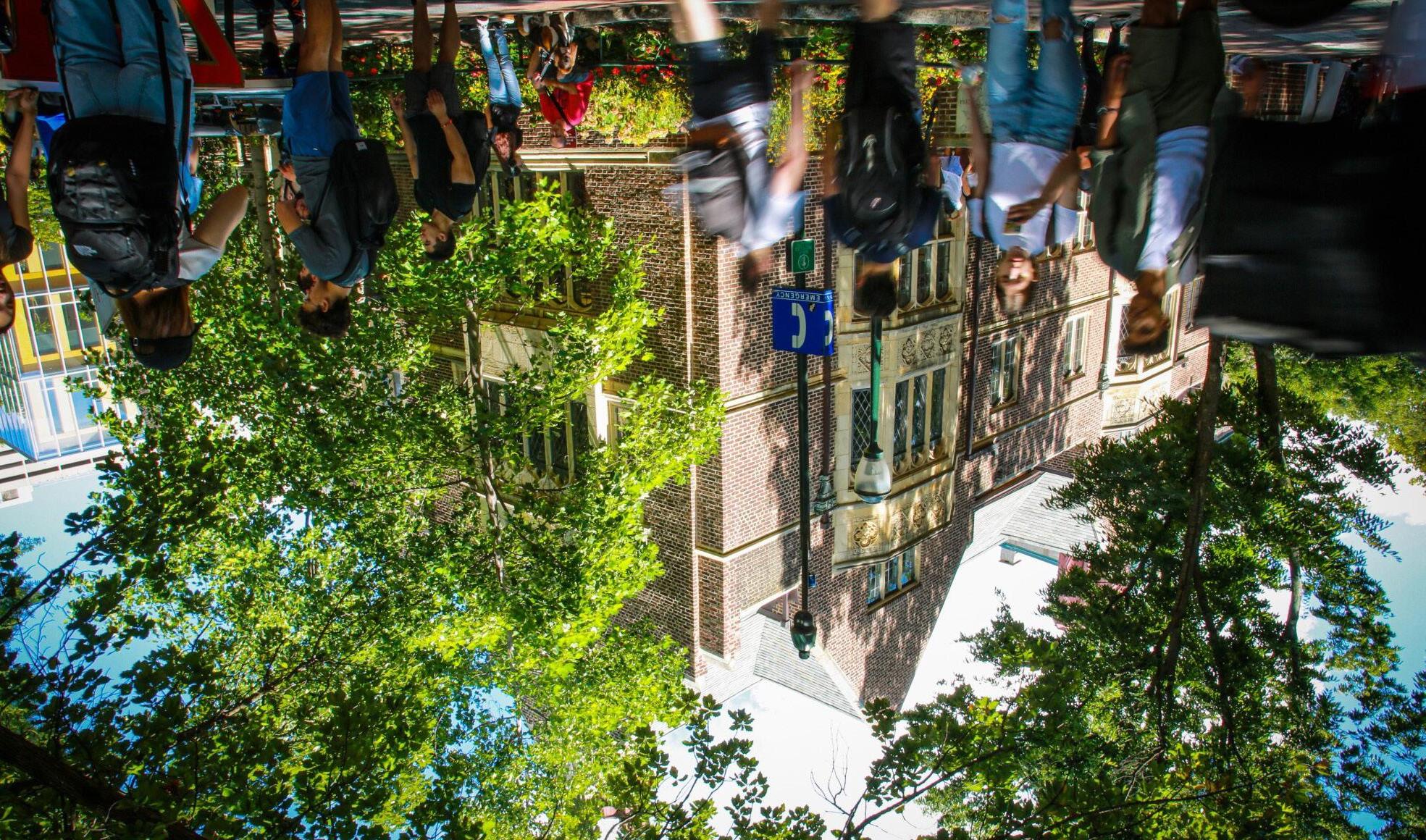
The reimagining of the ARCH building, so fully in step with this idea and so strongly guided by student input and student leadership … embodies our eforts to make Penn a supportive place for our entire diverse community. LIZ MAGILL
To stay in tune with students’ needs and
“We’ll really need to look at the student demographics and assess the gaps in all the different spaces,” she explains. “I’m just keeping mindful of how quickly the student demographics change and building out programming and space that can keep pace with that.”
These undergraduates conducted research surrounding their areas of focus for the better part of a year in order to shape ARCH’s future as best as possible. “They approached the work really professionally and systematically when we divided into working groups around aesthetics, scheduling priorities, and space allocation,” she remarks. “They’ve been very mindful when it comes to their communities, not just their own individual opinions about the space. The way they’re using it now really shows that they are being creative about different ways they can use the space we now have.”
granted the physical places that we occupy, but Hall’s pre–Penn experience developing residential, community–based programs for nonprofits taught her to do the opposite. For her, the ARCH renovation is about prioritizing “how comfortable students feel owning the space, and being in it in the course of a day for their own drop–in activities.”
Assistant Vice Provost for Strategic Planning and Operations Laurie Hall is overseeing the physical transformation of the building, a critical part of the renovation. “It’s all about visibility,” she explains. “If you belong to one of the student organizations formally, you’ll know where the ARCH is, but if you’re a student who just wants to explore different cultures, or you don’t know if you’d necessarily want to formally join a group, that’s your opportunity to be to see this very visible space on Locust.” It’s easy to take for
relocated in stage one of the building’s much–anticipated renovation, which wrapped up mid–September, making the building a zone now solely for cultural centers. The revision plan, called Reimagining ARCH, seeks to capitalize on this newfound vacancy to create an inclusive, adaptable space for generations of minority students to come. As President Liz Magill described in her remarks at ARCH’s Sep. 7 unveiling ceremony, “The reimagining of the ARCH building, so fully in step with this idea and so strongly guided by student input and student leadership … embodies our efforts to make Penn a supportive place for our entire diverse community.”
It’s only recently that the building became fully dedicated to fostering this kind of community; for the last few years, it has also been the home of the Center for Undergraduate Research Fellowships. Now, a new season of ARCH is upon us. CURF
ou may know it as the best place to SABS on a sunny day or ground zero for every student group and their requisite free* Insomnia Cookies, but the Arts, Research, and Culture House is more than just a pretty face. The building has long been a pillar of Penn’s rich multicultural community, housing minority affinity groups such as La Casa Latina, the Pan–Asian American Cultural House, and MAKUU, Penn’s Black cultural center. Since it opened in 2014, ARCH has become a hub not only for each respective community, offering programming and events relating to particular cultural identities, but also for groups of students to foster a sense of belonging within and without the physical space.
YBY ANJALI KISHORE
more students— one room at a time.
How the ARCH renovation is making space

Graphic: Tyler Kliem
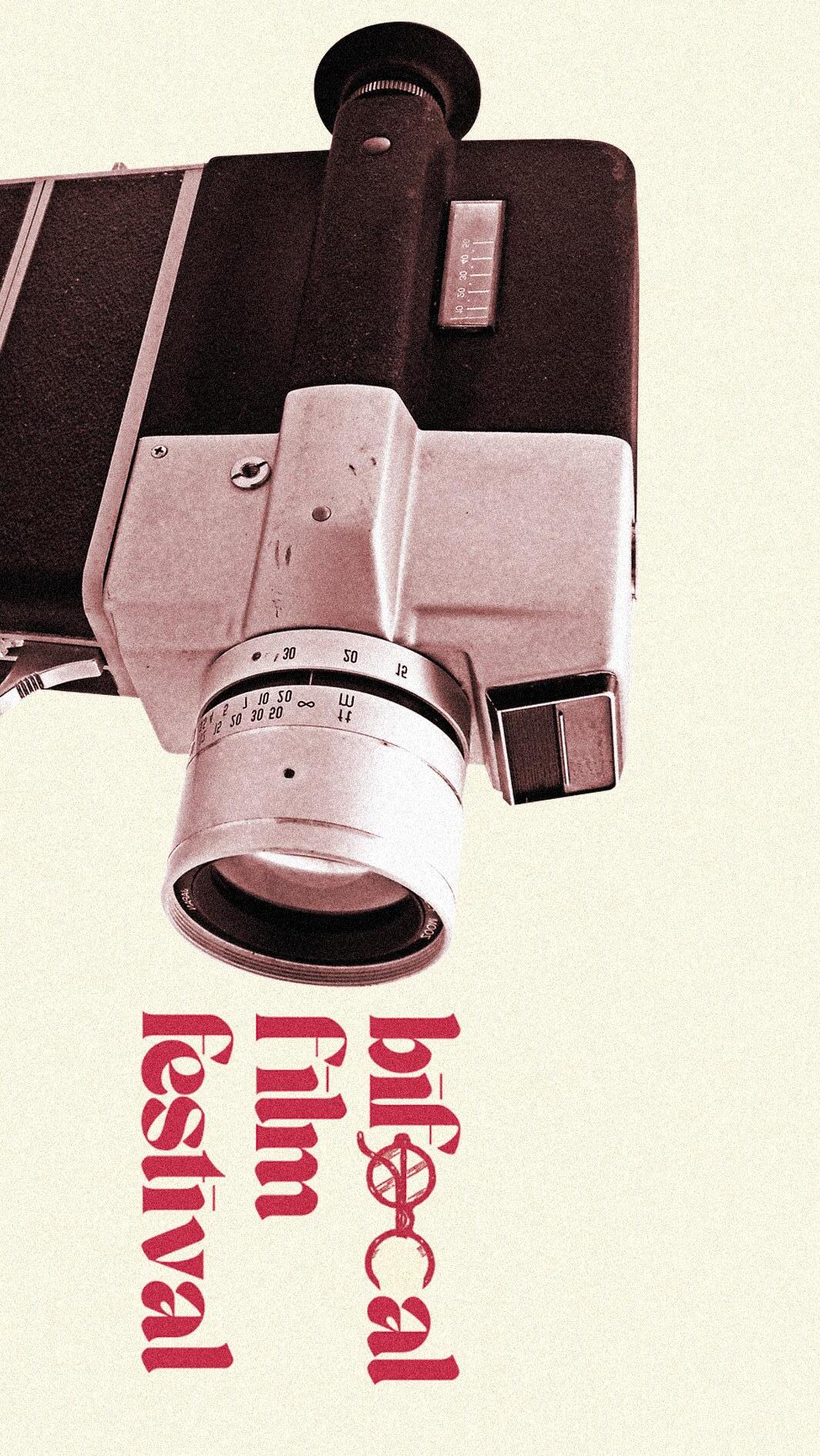
“Almost nothing is as rewarding as this festival,” Pratt says, with a beaming smile on her face. “What’s amazing about this process, like all films, is that it’s growing completely from the ground up.” ❋
The work to create an entire film festival is difficult, especially without faculty -leader ship, but Pratt and her team are happy to put in their hours.
What Bifocal and Pratt hope is that other students will take up the festival and help it return for a second year. One day, it might be two days. It might be a weekend, maybe a week. Ultimately, the hope is that Bifocal leaves a legacy of commitment to diverse films and stories at Penn. Beyond that, who knows? Their ambitions are boundless.
When talking about the future of Bifocal, Pratt laughs, “This is just the pilot episode.”
Organizations and student groups at Penn have rallied around the Bifocal Film Festival, and Pratt’s connections from FilmAid -Ken ya were enthusiastic. Pratt has spearheaded this project, but it has taken a village. She works with a large team of committee -mem bers, all students, who work on fundraising, planning, and securing industry interest and support. That’s a key element of Bifocal’s mission, which hopes to connect its student filmmakers to industry professionals and professional opportunities.
“[It’s] all about the process of having an idea, and then executing it. Beginning with an idea, doing the research, getting the funding—these are all transferral skills from filmmaking,” Pratt says.
Essentially Criminal taught Pratt how to build something from the ground up, which was useful when organizing the Bifocal Film -Fes tival.
Directing
Pratt said that without the resources at Penn to help support her ventures and dreams, she isn’t sure she’d be a filmmaker today. She received funding from the Seltzer Family Foundation for her early film work, allowing her to pursue her first–ever -docu mentary project, Essentially Criminal, about the United States–Mexico border. Now, Pratt is committed to producing a festival for other students to exhibit and showcase their -cre ative work, just as she had been given the opportunity to at Penn. Pratt’s no stranger to creation herself, whether she’s working on one film or the whole festival.
Pratt is firm in her push for monetary and connection–based prizes. But more than that, she knows the simple value that comes with validation.
The Bifocal Festival includes a dazzling range of categories, from animation to -exper imental to music video. Eventually, when -sub missions close Jan. 27, an internal committee will pick the final selections for the festival. The festival will run all day, leaving the prizes for the evening. While you might not pick up anything like an Oscar at the Bifocal Festival,
This is the heart of the Bifocal Festival: near and far. Local and global. National and international. Penn and the world that it -in habits. With a tentative location at the Perry World House, a tentative date in early April, and their fundraising growing every day, the dream of Bifocal is slowly shaping into -real ity. The team is working at lightning speed: They opened for submissions on Nov. 14, and as of the next day they had over 100 student films from 38 countries. They will begin -cu rating their final selections in February. The festival will be open to anybody who can -ver ify their affiliation with a film program in an academic institution or alternate media curriculum.
tion—the bifocal glasses—which allow one to see both near and far. The metaphor here is -intui tive and nuanced; multiple lenses which focus in and out on multiple films, magnifying and focusing on the stories that we might otherwise only see from an enormous distance.
were inspired by Franklin’s pioneering -inven
ery Penn student may be completely up to date on their Ben Franklin trivia, but the team behind the Bifocal Festival was. They
The story behind the festival’s name revolves around an intriguing -met aphor: the bifocal. Not -ev
“How could we, with all of the power that comes with being Penn students, create something to -high light diverse stories across the globe,” Pratt asks.

“They were able to translate everything they’d been through into film; they made art about their lives and -ex periences as -ref ugees and they were also telling stories that had universal meaning,” Pratt tells Street.
Last summer, future Bifocal Director and Founder Maya Pratt (C ’23) was on a study abroad program. She was there to work with FilmAid Kenya, an organization -teach ing film and media skills to students of the Kakuma -Refu gee Camp in -North west Kenya. The work and -storytell ing produced from such harsh -circum stances struck Pratt deeply.
he story of Penn’s upcoming -stu dent–run and produced Bifocal Film Festival doesn’t start where you would expect it to—in Philadelphia. Rather, it begins in Kenya.
SORRENTINO
TPratt’s experience in Kenya opened her eyes to a wealth of global cinema—which was largely being -cre ated by young filmmakers or student -film makers. These filmmakers were her peers, but that didn’t mean they had all been given an equal playing field. Upon arriving back home in the United States, Pratt’s -imagina tion sparked instantly. Taking inspiration from other popular college film festivals like the Ivy Film Festival, Pratt envisioned a project that highlighted unique -stu dent -sto ries from around the globe and hinged on both the scaled–down locality of Penn and the massive international community Penn brings together.
And you are?
tion since freshman year, and I didn’t settle on it until this morning. But the two types of people are the people who talk and the people who do numbers.
I have to be honest with you. I’ve been thinking about how I would answer this -ques
There are two types of people at Penn …
like I’m always someone who has a lot of different things happening all at once, but all of them are entertaining.
My gut says the Annenberg Center, because you know, there are three different stages there—three different auditoriums. There’s always different stuff going on, and I feel
If you were to describe yourself as a building on campus, which would it be and why?
“Vienna” by Billy Joel
Last song you listened to?
Save Rock and Roll by Fall Out Boy or American Idiot by Green Day
No–skip album?
Honestly, though, right now, I’m writing a thesis, and that has been taking up all of the time that I wish I was dedicating to finding a job. ❋
The plus side of that was that I got to do those really cool things like reading, not just ordinary intern tasks. The downside is that there was no position for me to just jump into, because the infrastructure is not there yet. I definitely want to stay in New York [and] stay on the East Coast. I like being close to home. You know, I’d love to work in some type of entertainment capacity production assistant. I’ve been looking into what NBC and ABC offer and just kind of seeing where I end up.
I would love to go back there after graduation, but I was the first intern in their New York office ever.
I got to read a bunch of early drafts of novels, and I was the guy who decided whether or not we should pass on those books, so that was a bit of a power trip.
That’s a good question, isn’t it? It feels like everybody around me is figuring out what they’re doing, and I am still searching. Last summer, I worked at a talent agency in New York. It was a ton of fun.
In between now and being a talk show host, what’s next for you after Penn?
That, and WilCaf coffee.
You know, it really just is the people, isn’t it? I know that I talked about that
talk show host. I know there are six of those on television, and they all already have the hosts, but sort of everything I’ve done, I think, is not necessarily directly in pursuit of that, but building on those skills. What are you going to miss the most post–Penn?
My dream in life—long–term, and emphasis on long–term—is to be a late–night
I think the unifying thing is that I’ve looked for activities where I have an audience, and I guess that kind of plays into what I’m studying. Interacting with people is something I love so much, and the comfort in doing so is something that I’ve gotten both out of my extracurriculars and out of academic pursuits.
Communication itself, through theater, is something I’ve been doing for as long as I can remember, so to me, there’s no real difference between standing and presenting in class for ten minutes and standing on stage in a musical or giving a tour.
But then, sort of going the other way, I have never once gotten up to present in front of a class and been nervous. Ever.
I tell people all the time, “I’m majoring in talking.” I’m sure some of my professors wouldn’t like me to dumb it down that way, and there’s certainly more to it than that, but at the end of the day, the things that I learned in the classroom have really made me a better leader, in the sense that I know how to interact with and talk to people. I just have a better sense—through those academics—of how people think through the ways they communicate with one another.
As for your academic interests, how does all this engagement tie into communications for you?
I talk. things. Kite & Key, peer advising, and being a Penn arts leader all stem from that—that idea that Penn is my favorite place—and I want to help make it the favorite place of other people however I can.
a lot, because almost all of my friends I’ve met through some extracurricular or other. But that’s the thing that I say at the end of my tours every week—I love the people here. Everybody here is so passionate about what they do and also so passionate about helping other people pursue their passions. I don’t want to say I have a unique perspective on it, because everybody’s gonna say they love the people here, but especially as a communications major and studying the ways that we interact with one another, that’s what I’m gonna miss most when I graduate.
Photo: Zihan Chen


The After School Arts Program has been the most rewarding thing I’ve done in terms of engaging with the community. Once a week, we bring in Philadelphia middle schoolers, and we mentor them in things like improv, singing, dance, and instrumental music. That’s really great because [our volunteers] come from all across [PAC], as well as some people who are just really passionate about community service and giving back to the Philadelphia community.
“Hey, we’re in crisis mode, the show’s this week, and the lights don’t work.” I’m willing to show up and help, and I know that they would do the same for me. It’s a really diverse and vibrant community [where] everybody really supports one another. We all care about the arts in some capacity, and even though we aren’t necessarily all familiar with what one another does, it’s like, I can’t dance, but I can respect dance. What about your engagements with communities outside of the arts?
In general, even though I’m on the board of Players, I consider myself a member of the theater arts council in the sense that I work on all of the shows. You can only be in one show every semester, but you can be on the production staff of as many as you want. So typically, I’m on the production staff of at least three, if not more, out of the seven total. It’s just great, because everybody’s always willing to lend a helping hand. There have been times that I haven’t been officially on the production staff, but someone said,
probably never would have seen a Dhamaka show otherwise, but it’s so cool and was so impressive to see.
Also, I think that all of those things where I work with incoming students and help guide prospective students have been some of the most fun I’ve had at Penn, because I remember how nervous I was to come to college. I matched with Penn through QuestBridge. While it’s not something I’ve made a huge part of my identity at Penn, I am a [first–generation low–income] student, and there’s a lot that comes with that when you come to college. You’re worried, especially at a school like this. “Am I going to fit in? Am I going to find friends?” I feel like I’ve really found so many great and supportive communities here that really let me excel, and I have sort of made it a mission of mine, since even sophomore year, of doing that for other people. It’s been important to me to be a part of opening those doors for people and reassuring them that anything you want to do at this school is possible, and you should believe in yourself and do those
I think that Players has been my top experience at Penn. I’ve met so many of my best friends there, and I live with Players people now, so that’s been a super valuable community that I jumped into right away. I acted all through high school, and towards the end of high school I started doing some tech stuff, which I do some of here as well. I’ve done lights and sound design for a number of shows across PAC, not just Players, which is a great way to stay involved in these other groups. I know that a cappella isn’t my thing, for example, but I really enjoy seeing other people do it. I did lights and sound for Penn Dhamaka last year and
This interview has been edited and condensed for clarity.
Photo courtesy of Tommy Christaldi
Through his avid engagement with the Penn performing arts community, notably as chair of Penn Players and member of the Performing Arts Council board, Tommy Christaldi (C ‘23) carved out his own path here at Penn. Dedicating most of his time to helping others do the same as a peer leader in the College and tour guide for the Kite & Key Society, the self–described talker also found his place on–and offstage. Hopefully, we’ll see him on a bigger stage in the not–too–distant future, fulfilling his dream of being a late–night talk show host.
search Assistant at Annenberg Public Policy Center
After School Arts Program Coordinator, Kite & Key Tour Guide, Peer Advisor, -Re
Hometown Aston, Pa. Major Communications, with minors in -consum er psychology and journalistic writing Activities Chair of Penn Players, Community Service Chair of Performing Arts Council,
Which of your activities have particularly shaped your Penn experience?
BY ANJALI KISHORE
fnds time to talk up a storm.
performing
and
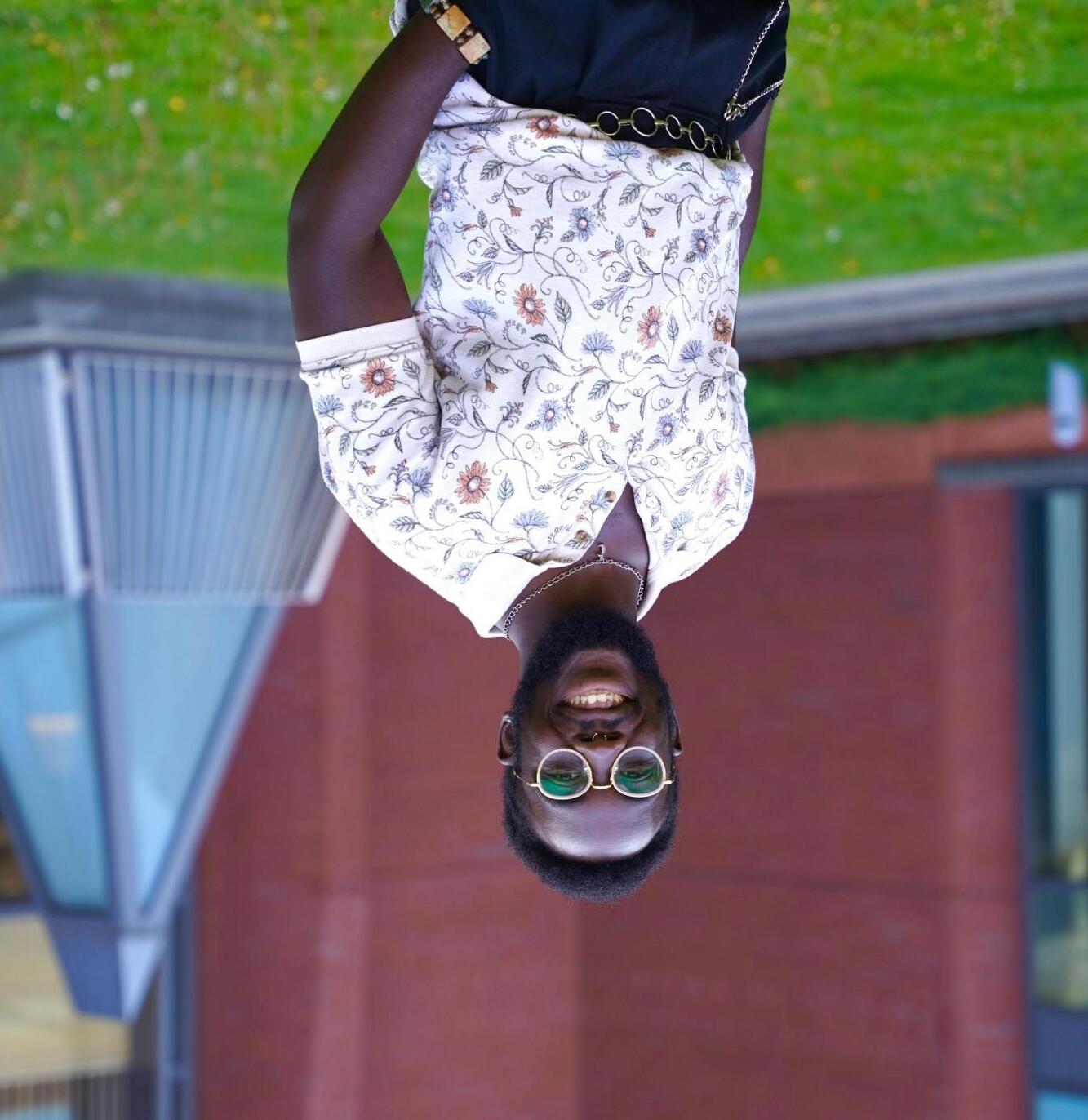

timacy, we’ll tell it to you exactly like it is. Now all you have to do is read.
Whether that’s the lives of college sex workers, the very best hookup jams, or personal essays that ruminate on sexuality, connection, and -in
Because this is a version of Street that isn’t afraid to talk about the things that are really on our minds as Penn students, as Philadelphians, as young adults growing up in this fast–moving, oversaturated era.

Two, Oscar Wilde’s law. But really, it’s because sex is so much of the stuff of being a college student. We talk about the sex we’re having. We talk about the sex we’re not having. We talk about the boy who asked us on a date to Hummus Grill, of all places.
And for anyone who’s spent time walking down Locust Walk with your AirPods set to transparency mode, you know that many of the conversations happening around us all the time are about one -partic ular kind of relationship. Which brings us to the theme of this year’s Love Issue. If you couldn’t tell, the issue is about sex. Why? One, it’s hot.
That’s kind of how I think about Street, and why it matters so much to me and to so many of our staffers: We’re writing about style, and music, and arts, but really we’re writing about ourselves, and the way we relate to our city, our campus, our identities, and the culture we’re surrounded by.
Psychologists say we spend a pretty hefty portion of our -conversa tions with others establishing the dynamics of our relationships—I don’t remember the specific numbers, but it’s a lot more than you’d expect.
The signs were all there, of course. Throughout high school, I molded my music taste in the image of Pitchfork. In my dalliances with -be coming a chef, or a fashion designer, I was always more concerned with ravenously hoovering up copies of Saveur and Vogue than I was actually learning how to properly chop an onion or operate a sewing machine. But Street is where it became obvious.
Something tells me I’m not the first one who, in selling my soul to The Daily Pennsylvanian, realized what I want to do with my life.
tee. It took a merciful extra year to get here, and in the interim I’ve had the chance to write cover stories that mattered to me and -inter view one of my favorite musicians ever.
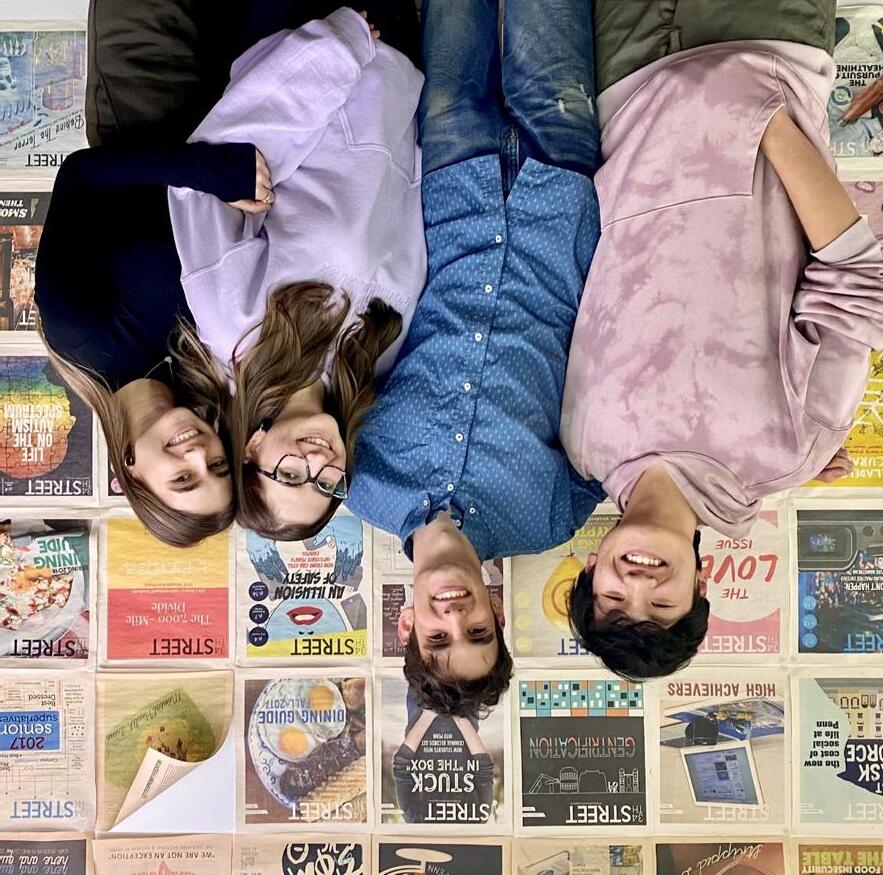
editor–in–chief as a sophomore, forgetting I’d turned 19 until 30 minutes after my -birth day because I was waiting for a decision from the elections -commit
We like to joke now that I was “dirty rushed” into Street—a fresh–faced music writer standing in for my high school best friend. Things picked up speed, and suddenly I was running for
mic switch to glossy paper, Street is a much different beast than it was when many of them were at the helm. But getting to this point wouldn’t have been possible without the strides each incarnation of Strexec has made. I’m grateful for all the work they’ve done, and honored to be able to write the next chapter of this legacy.
In the wake of a few fitful COVID-19 pandemic years and one -seis
Avatar State. No, not that Avatar. Not the new one either. I’m talking about that generation–defining (and vastly better!) -an imated series Avatar: The Last Airbender. Pretty much, our reincarnated protagonist can call upon the skills and knowledge of all his previous selves, pictured as a line of blue spirits stretching out to the middle -dis tance. In my lineage, there’s Emily and Bea looking over my shoulder, then Tamsyn, Annabelle, and before them the predecessors I know only by name—Nick Joyner, Orly Greenberg, Emily Johns.
itting down to write this letter feels kind of like entering the
S10,000 undergraduate students) and big ideas (sex, among others) and make them into something personal.
almost
At Street, we take big things (a 55–year legacy,
Frej, Felicitas Tananibe
Annie Bingle, Ivanna Dudych, Yamila
Audience Engagement Associates
Morgan Crawford, Luiza Louback
Sophia Barkan, Vikki Xu Staff Writers
Alex Baxter, Kayla Cotter, Emma Marks, Catherine Sorrentino, Ego Beat Writers
Film & TV Beat Writers
Jessa Glassman, Eyana Lao
Arts Beat Writers
Mills, Olivia Reynolds, Sruthi Srinivas
Derek Wong, Halla Elkhwad, Ryanne
Music Beat Writers
Emma Halper, Alexandra Kanan, Felicitas Tananibe
Style Beat Writers
Variar
Dedeepya Guthikonda, Sara Heim, Rahul
Focus Beat Writers
Katie Bartlett, Sejal Sangani
Features Staff Writers
STAFF
Julia Fischer, Copy Editor
Allyson Nelson, Copy Editor
Ani Nguyen Le, Deputy Design Editor
Sophia Liu, Deputy Design Editor
Esther Lim, Deputy Design Editor
Wei-An Jin, Deputy Design Editor
Jojo Buccini, Deputy Design Editor
THIS ISSUE
Kayla Cotter, Social Media Editor
Rachel Zhang, Multimedia Editor
Weike Li, Film & TV Editor
Irma Kiss, Arts Editor
Hannah Sung, Music Editor
Norah Rami, Ego Editor
Naima Small, Style Editor
Anna O'Neill–Dietel, Focus Editor
Kate Ratner, Assignments Editor
Natalia Castillo, Assignments Editor
Jean Paik, Features Editor
Avalon Hinchman, Features Editor
EDITORS
wangc@34st.com
Collin Wang, Design Editor
Alana Bess, Digital Managing Editor bess@34st.com
Arielle Stanger, Print Managing Editor stanger@34st.com
Walden Green, Editor–in–Chief green@34st.com
EXECUTIVE BOARD

The Daily Pennsylvanian, Inc. No part may be reproduced in whole or in part without the express, written consent of the editors. All rights reserved.
itor–in–Chief, at green@34st.com You can also call us at (215) 422–4640. www.34st.com © 2023 34th Street Magazine,
If you have questions, comments, complaints or letters to the editor, email Walden Green, -Ed
CONTACTING th34 STREET MAGAZINE
The Land on which the office of The Daily Pennsylvanian stands is a part of the homeland and territory of the Lenni–Lenape people. Per the Diversity Committee, we affirm Indigenous sovereignty and will work to hold the DP and the University of Pennsylvania more accountable to the needs of Indigenous people.
Illustrated by Collin Wang
With inspiration from B.L.O.O.M. DJ collective
Beauty thrives in the open fissures of human -connec tion. Offbeat, risque, and not-so-happy nedings -under score this Love Issue's equally impressionistic cover.
Illustrated by Wei-An Jin





February 2023
Foodies

Deliveries + Shopping Sprees Wants Needs + Musthaves Shop smarter. Shop Penn. #SHOPPENN

40 restaurants, and 15 sports and culture venues, we’re giving you 85+ reasons to stay on campus this semester. Enjoy a day-to-night shopping, dining, and social experience. Whether you are outfitting yourself for class, or prepping your family, you’ll finish your Back to School list at Penn.
With more than 30 shops,

